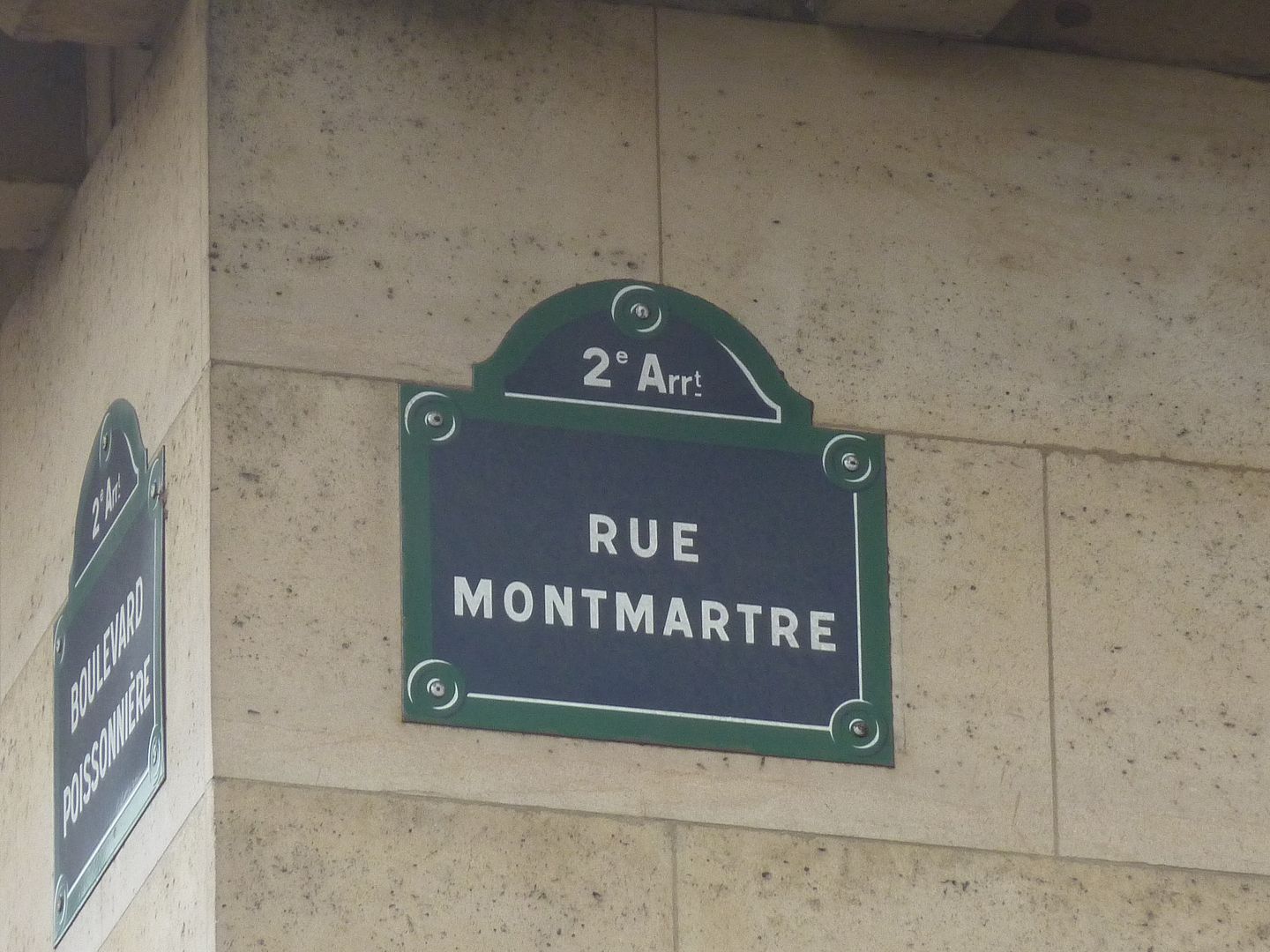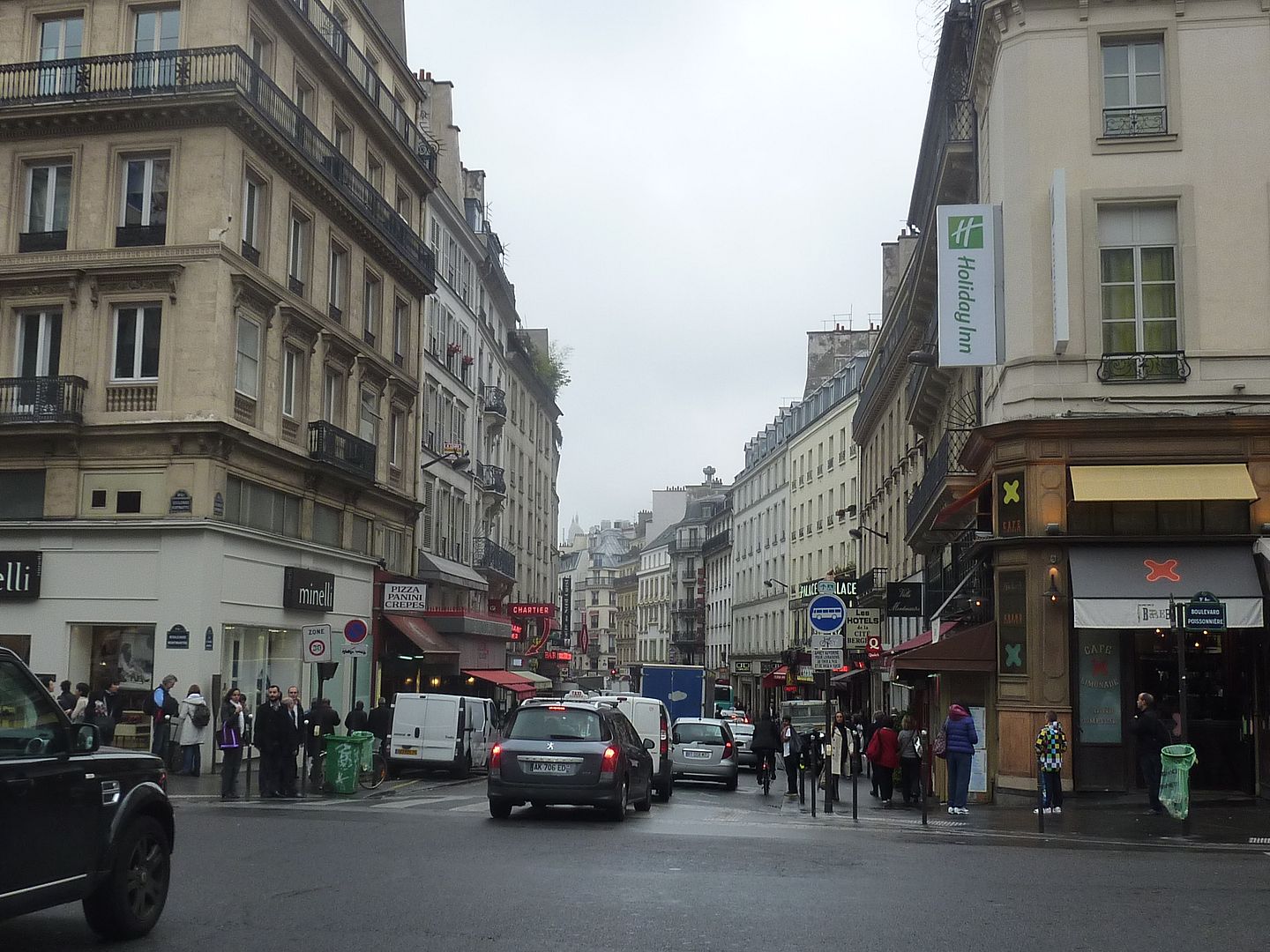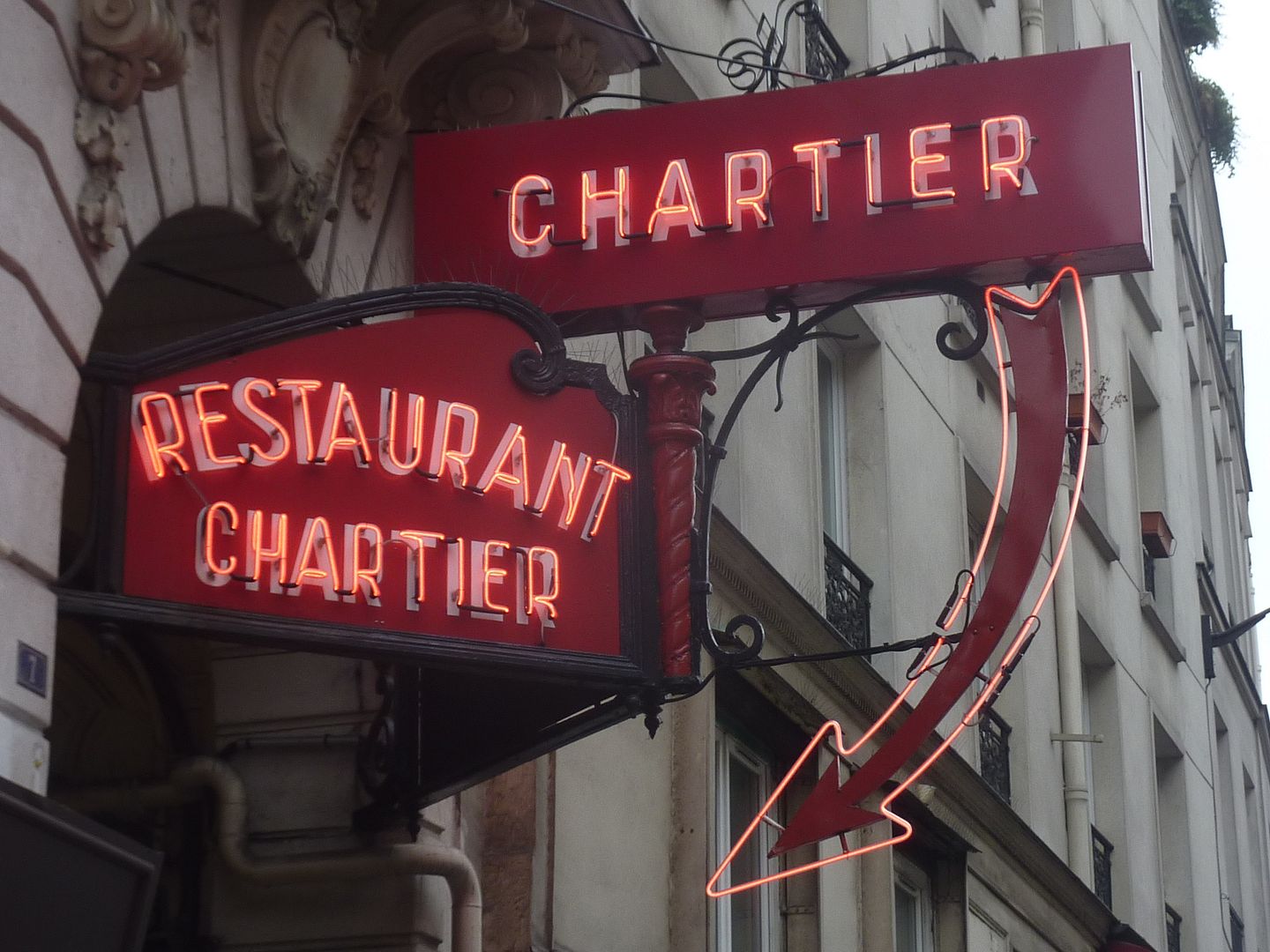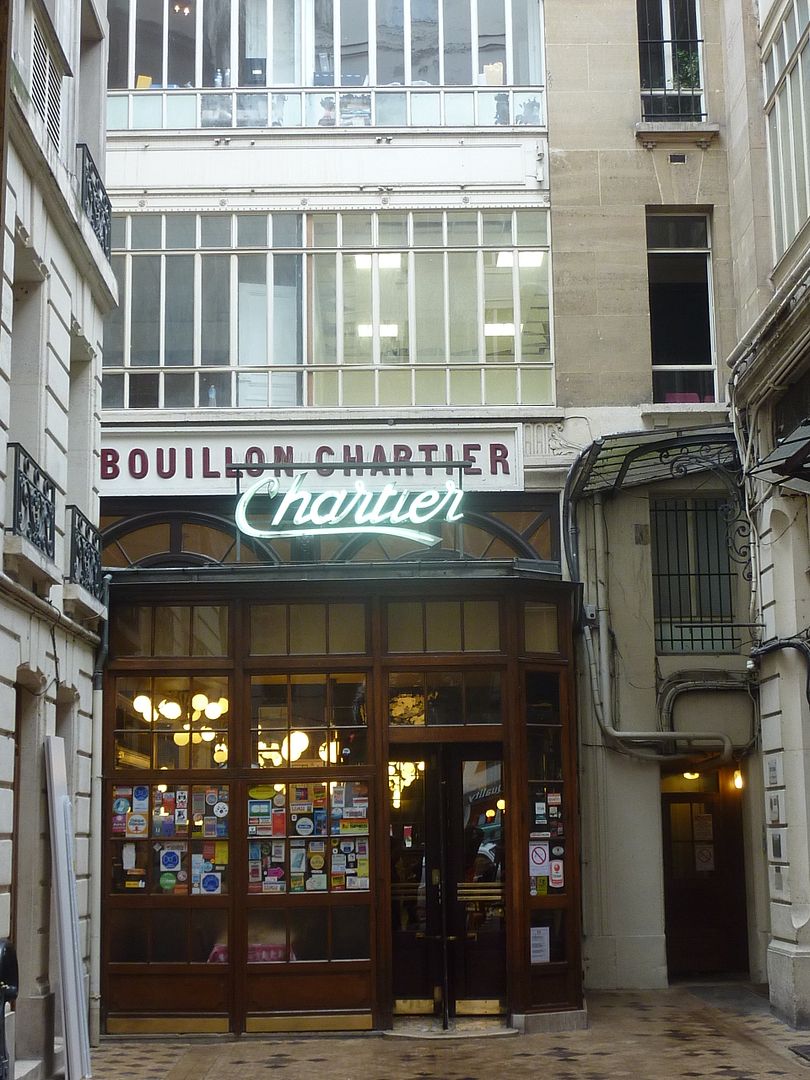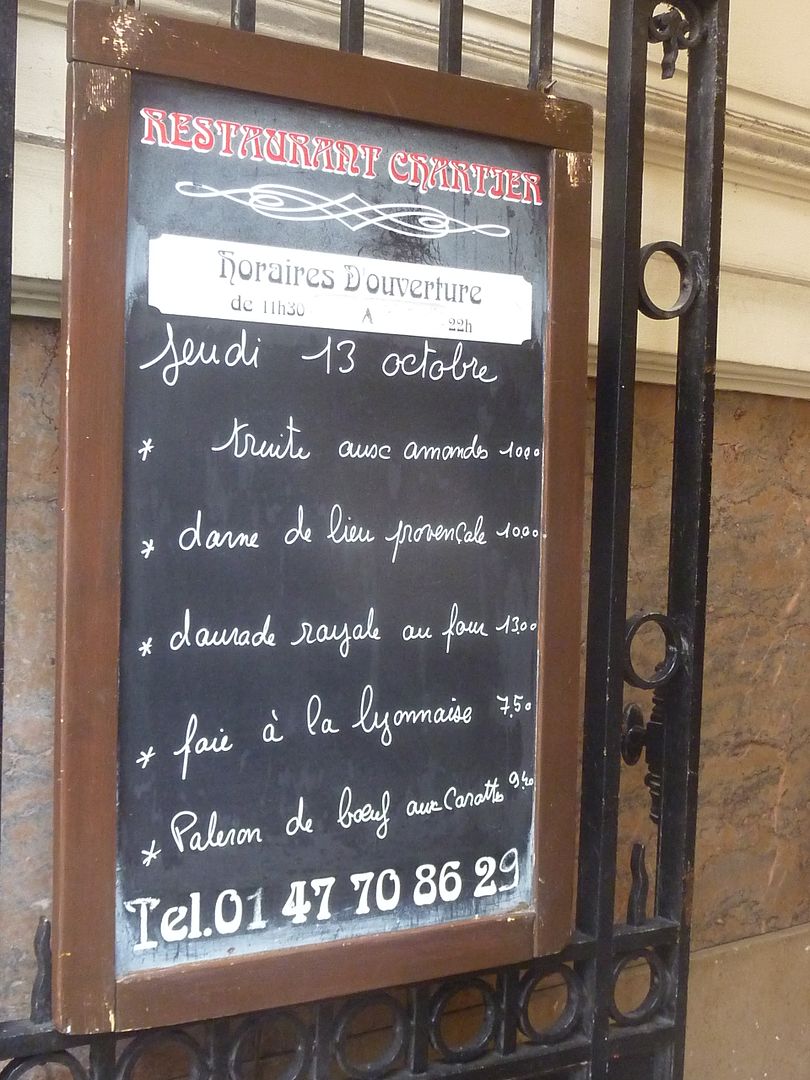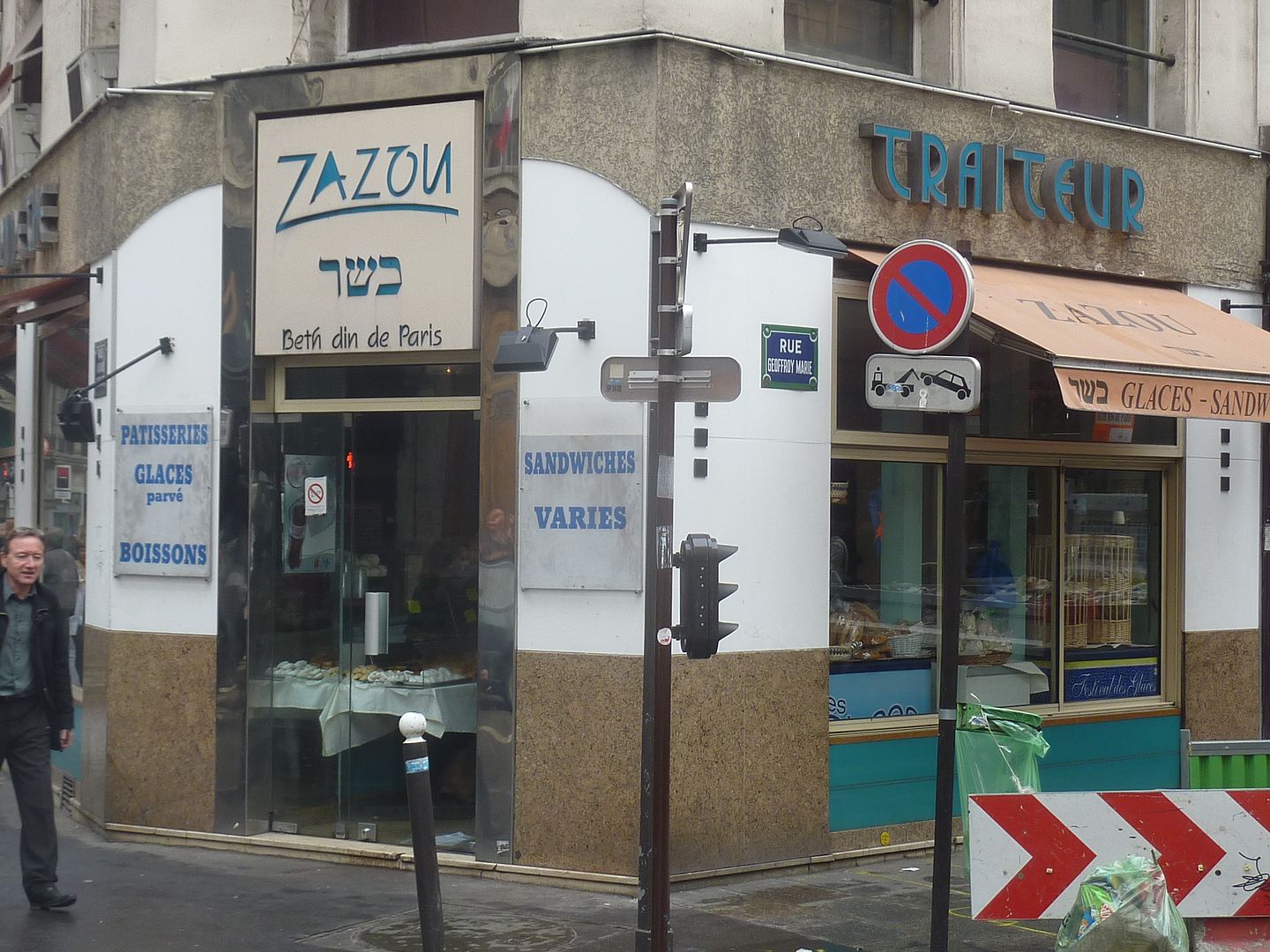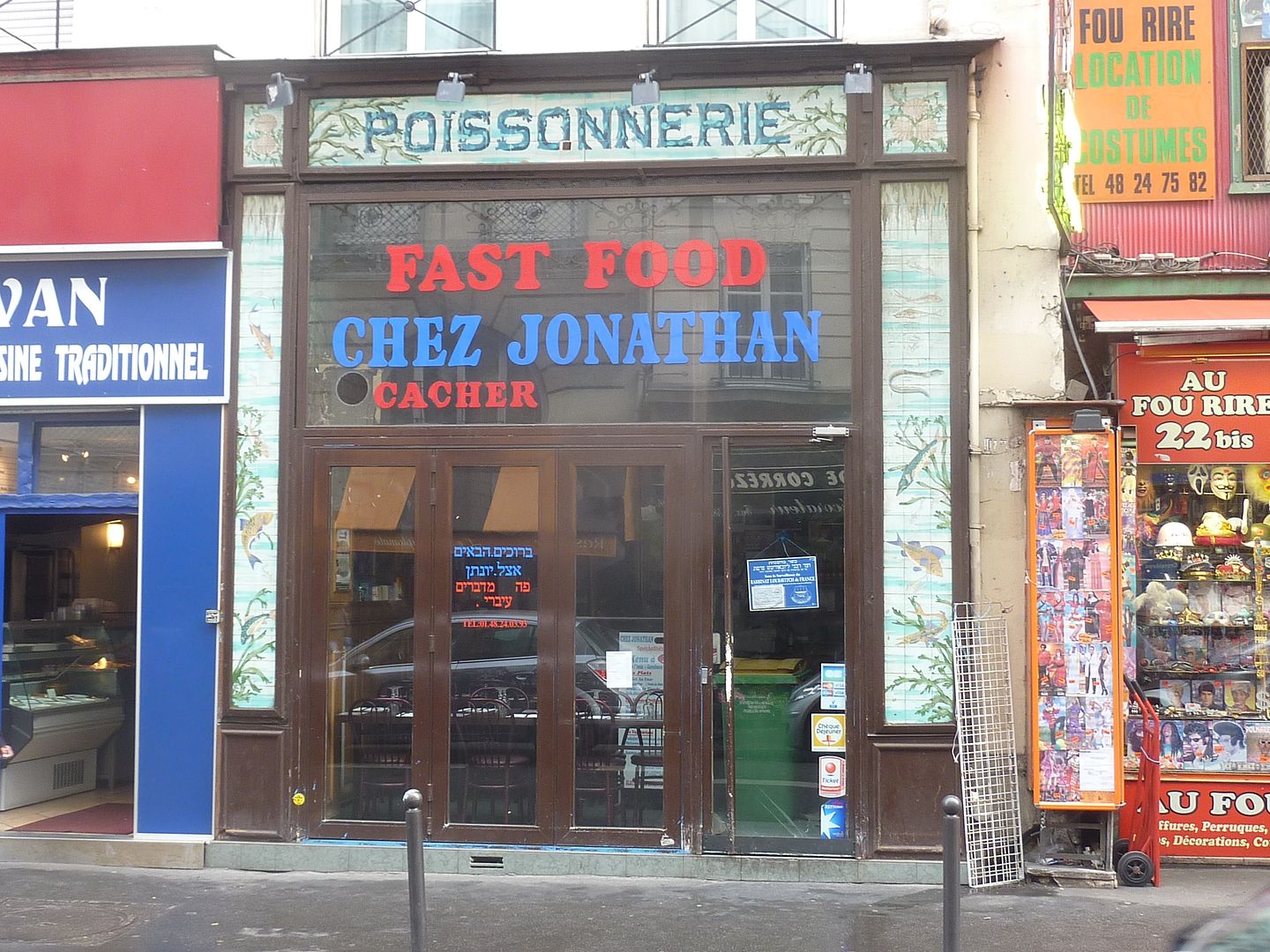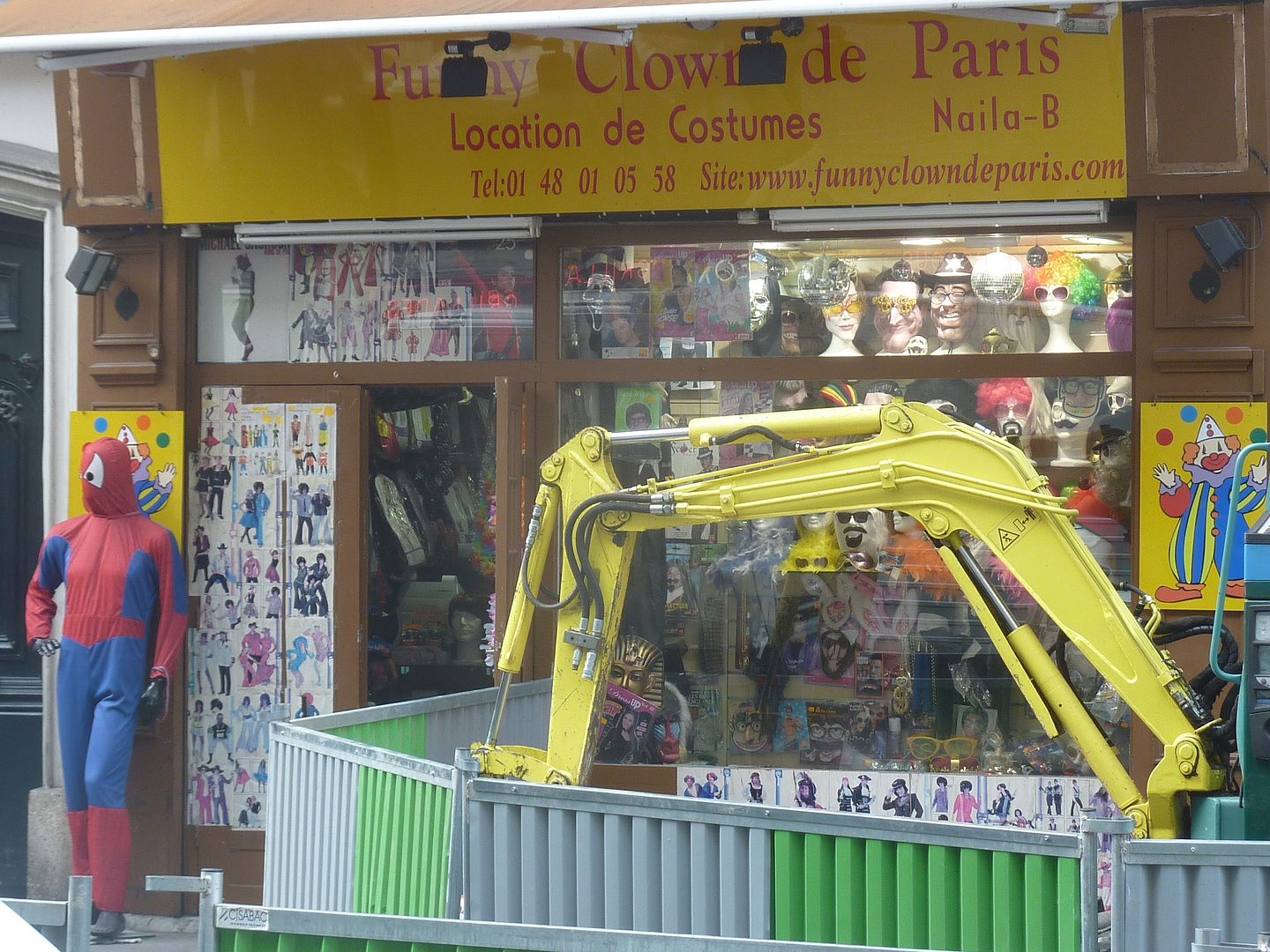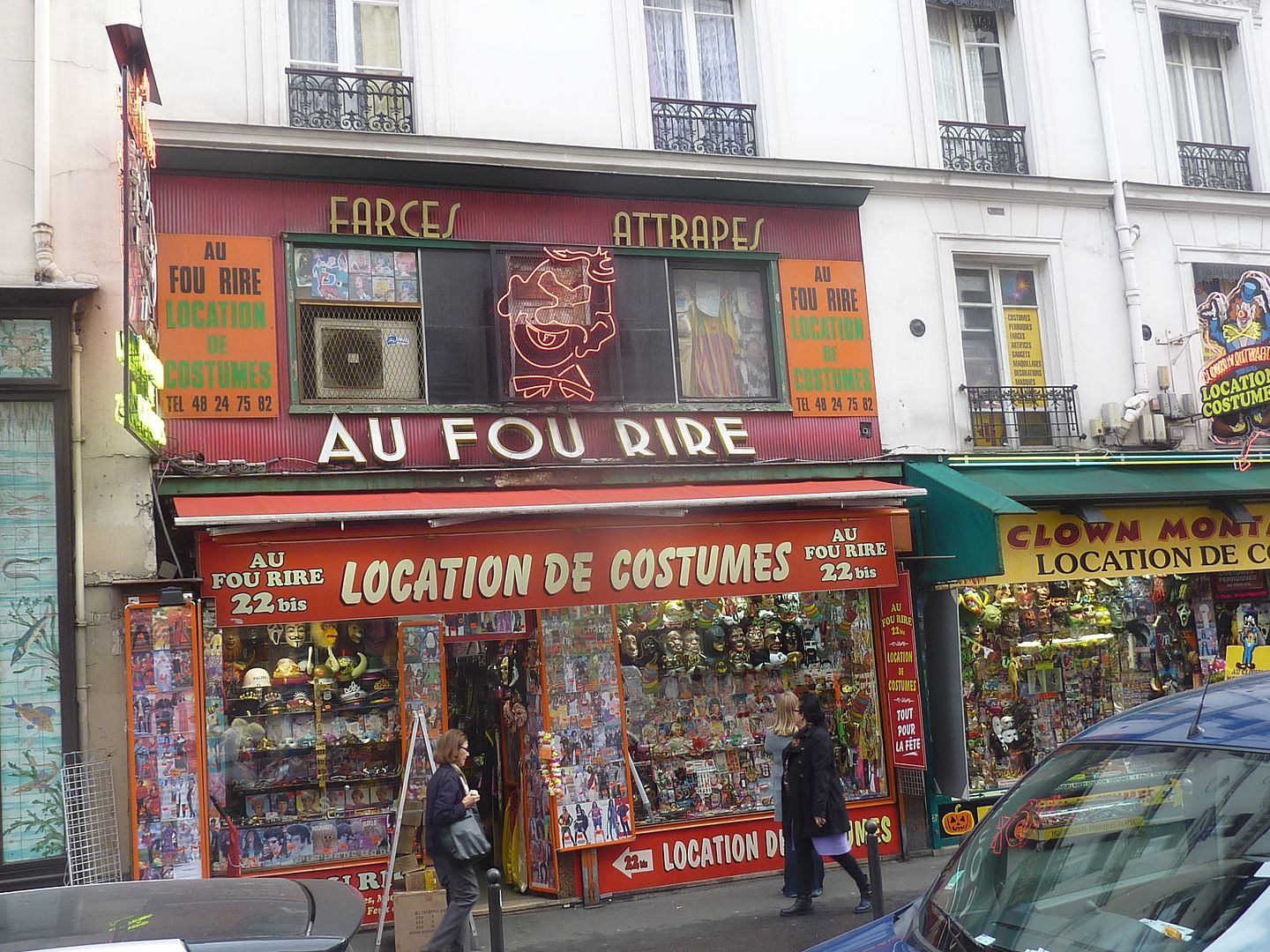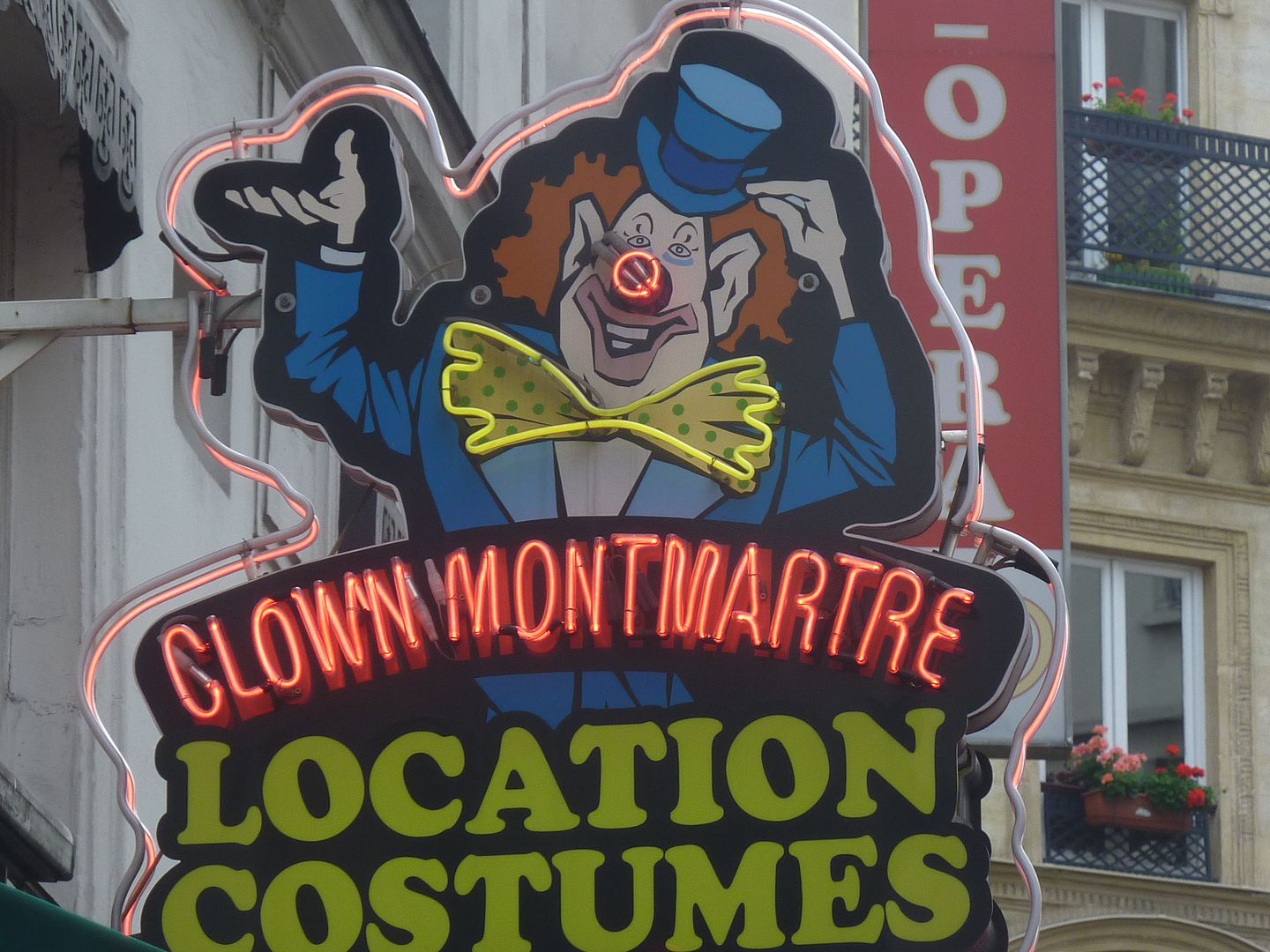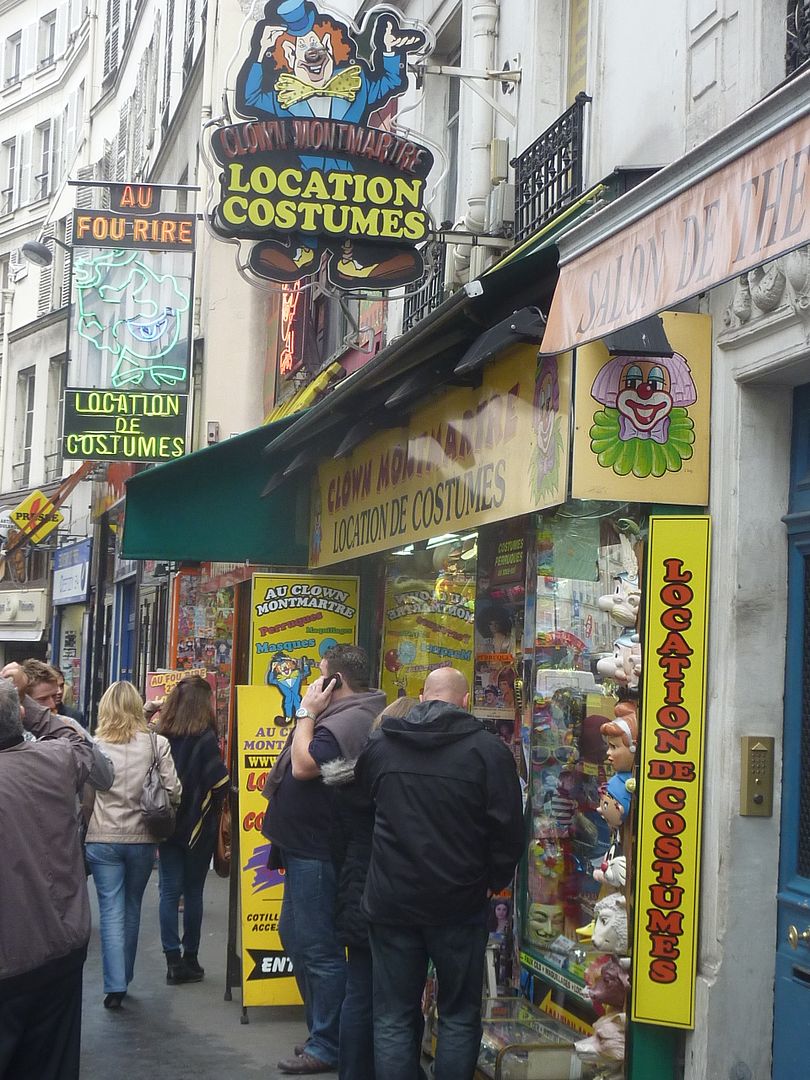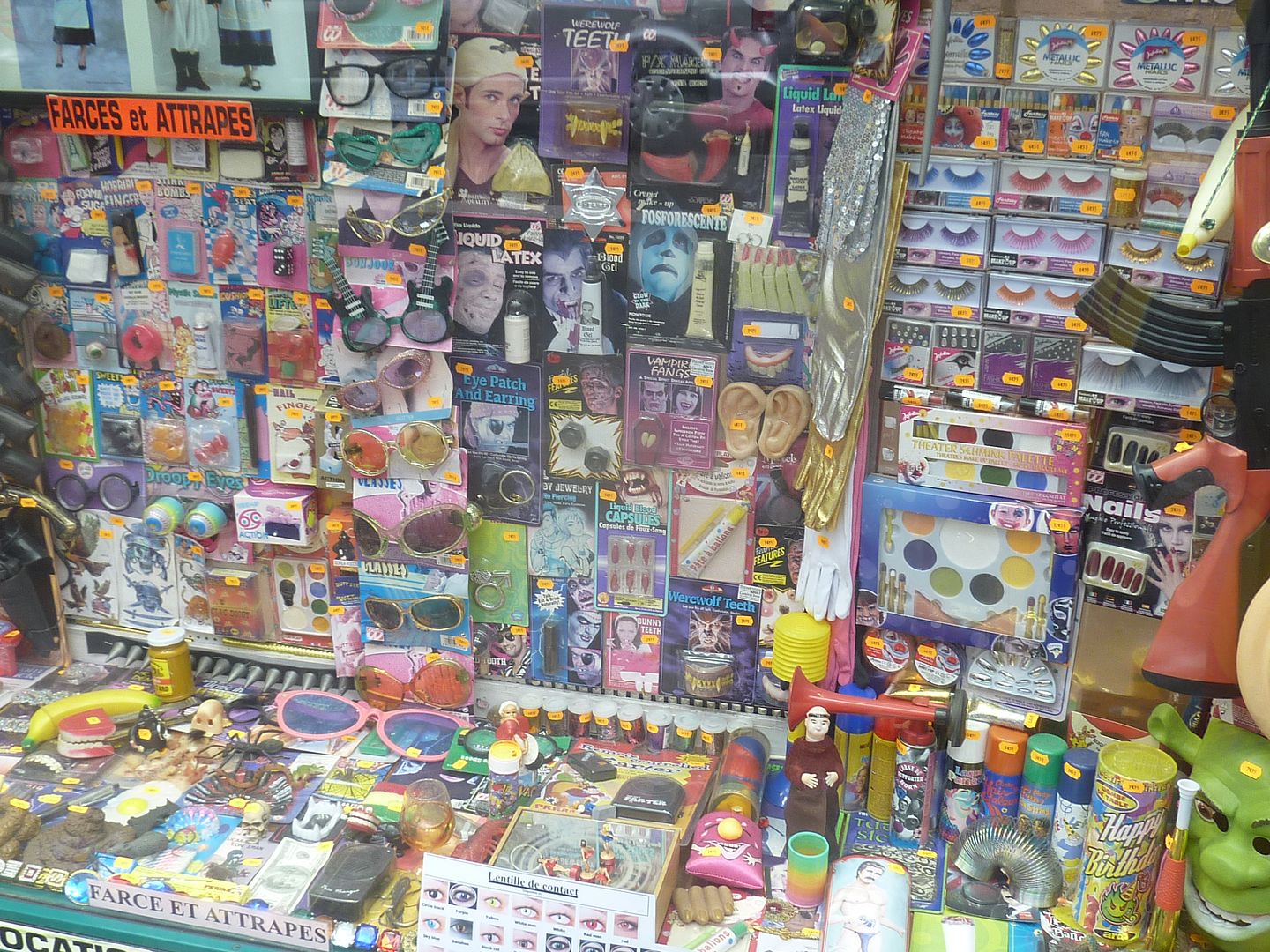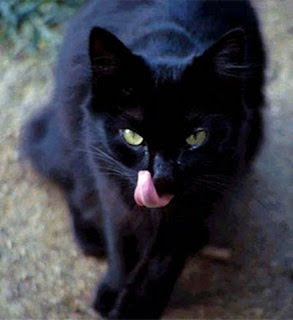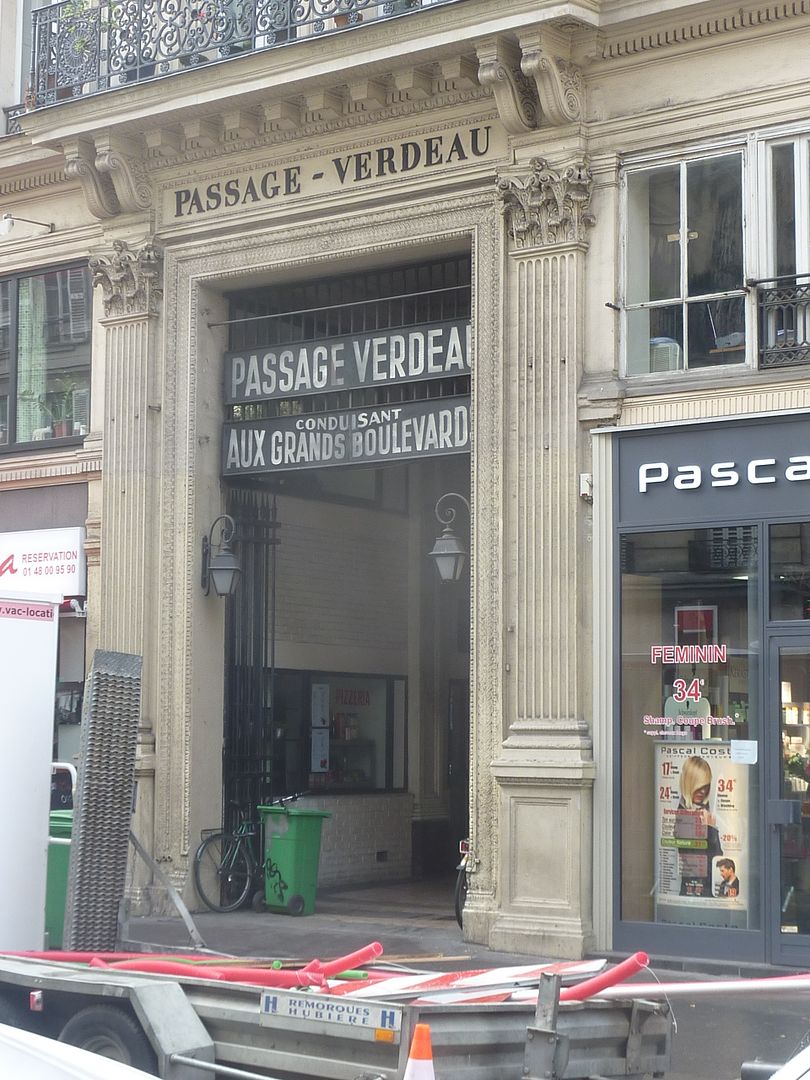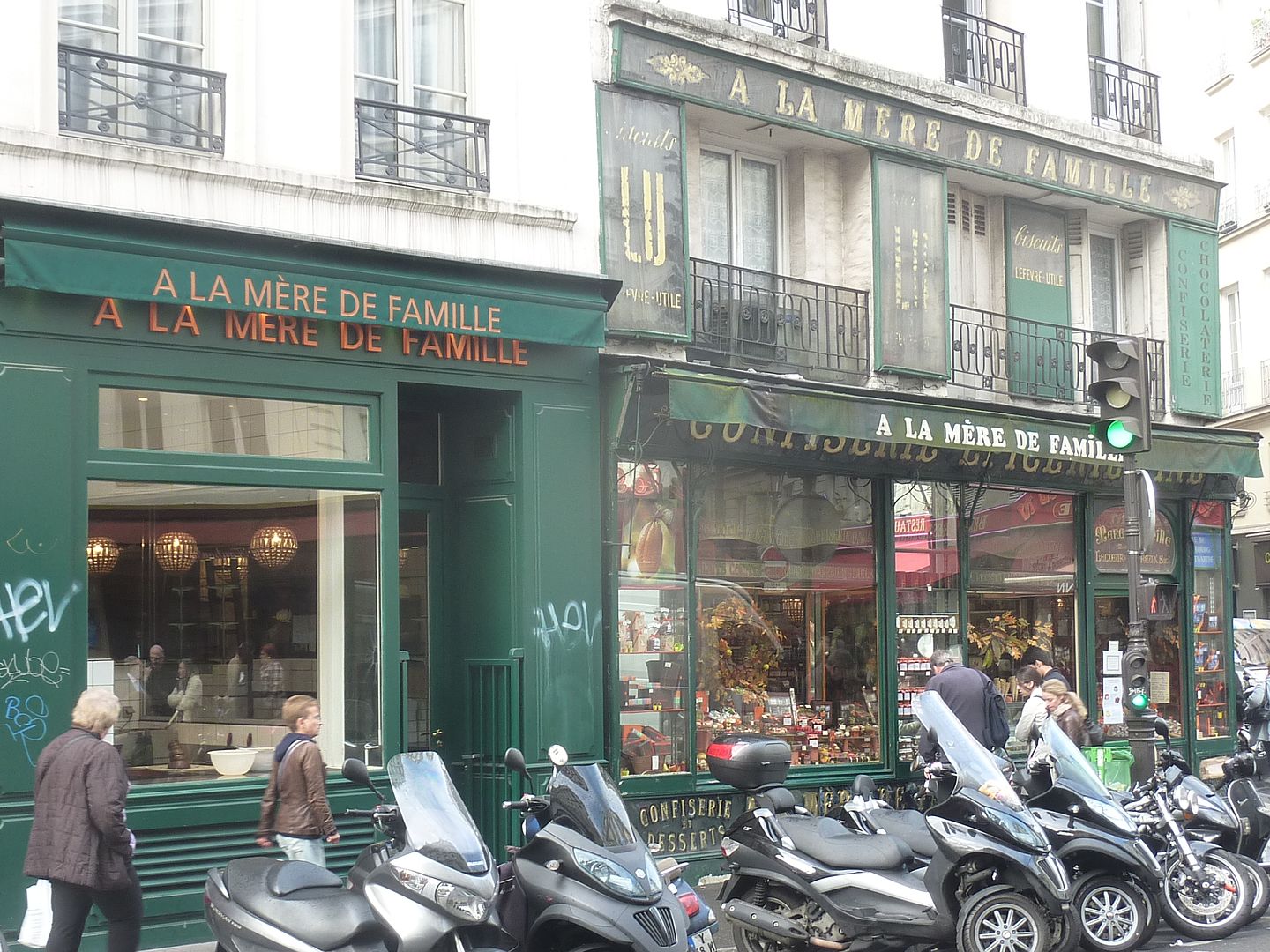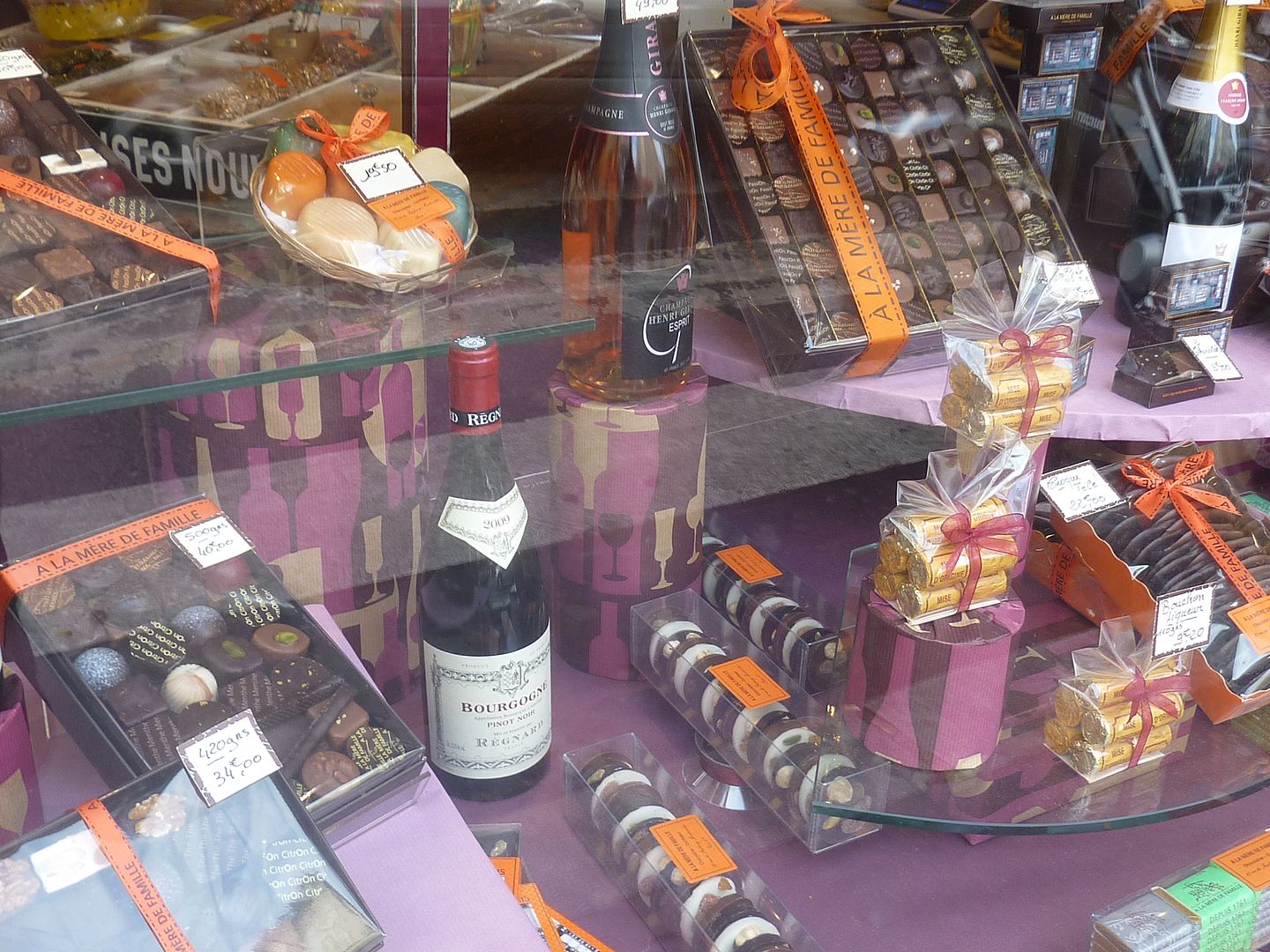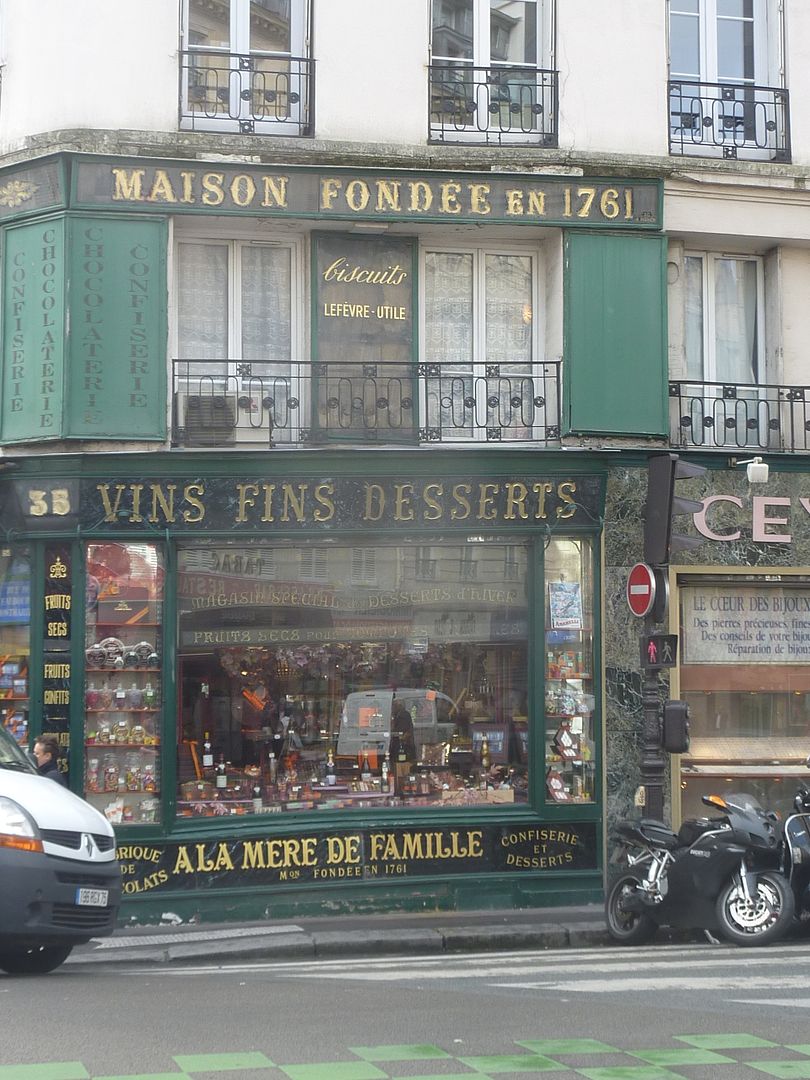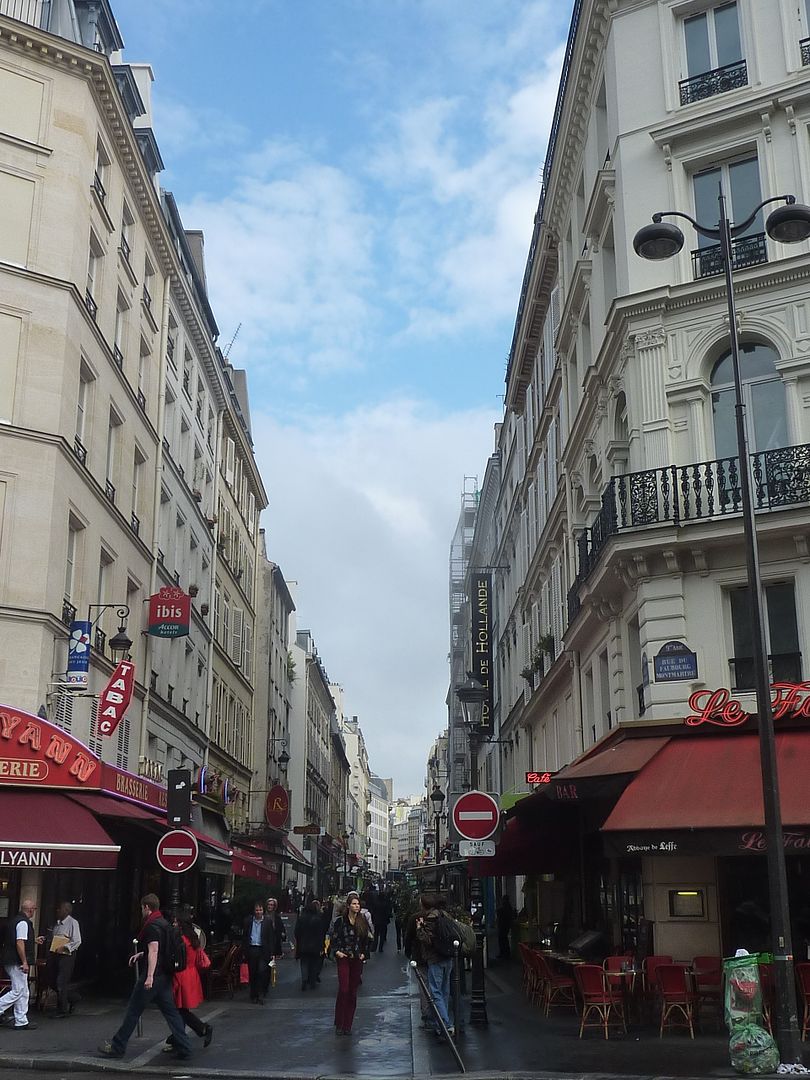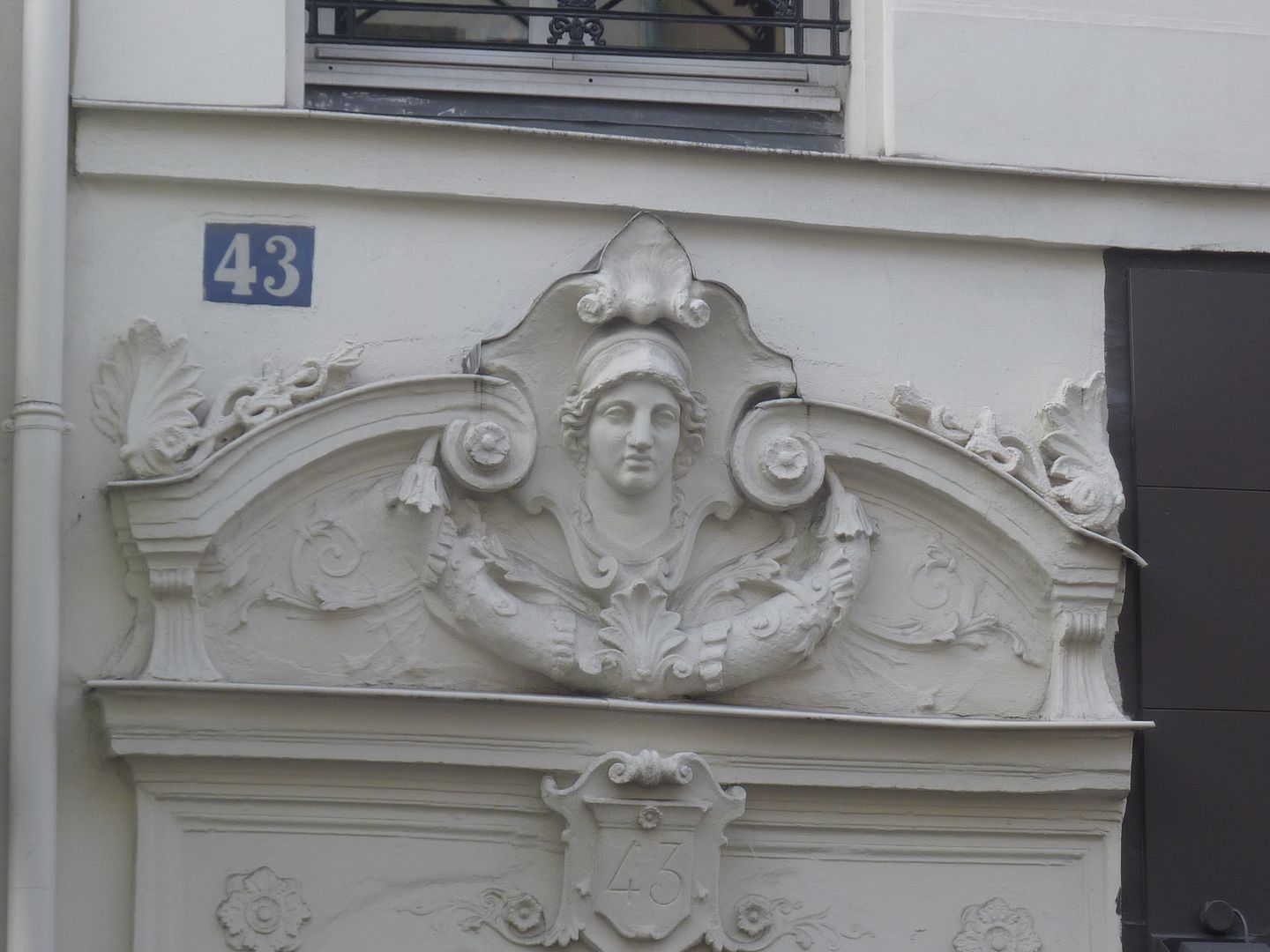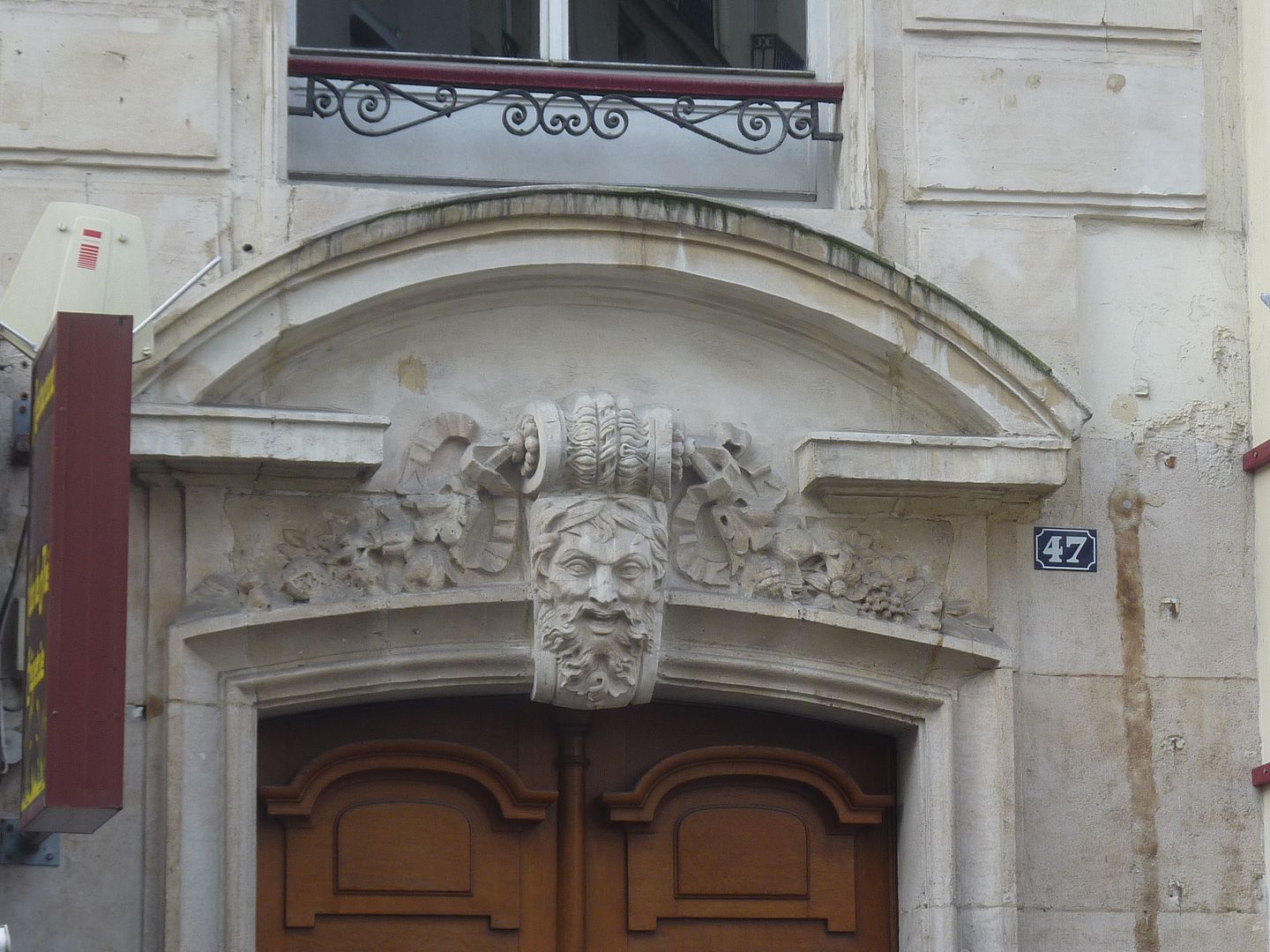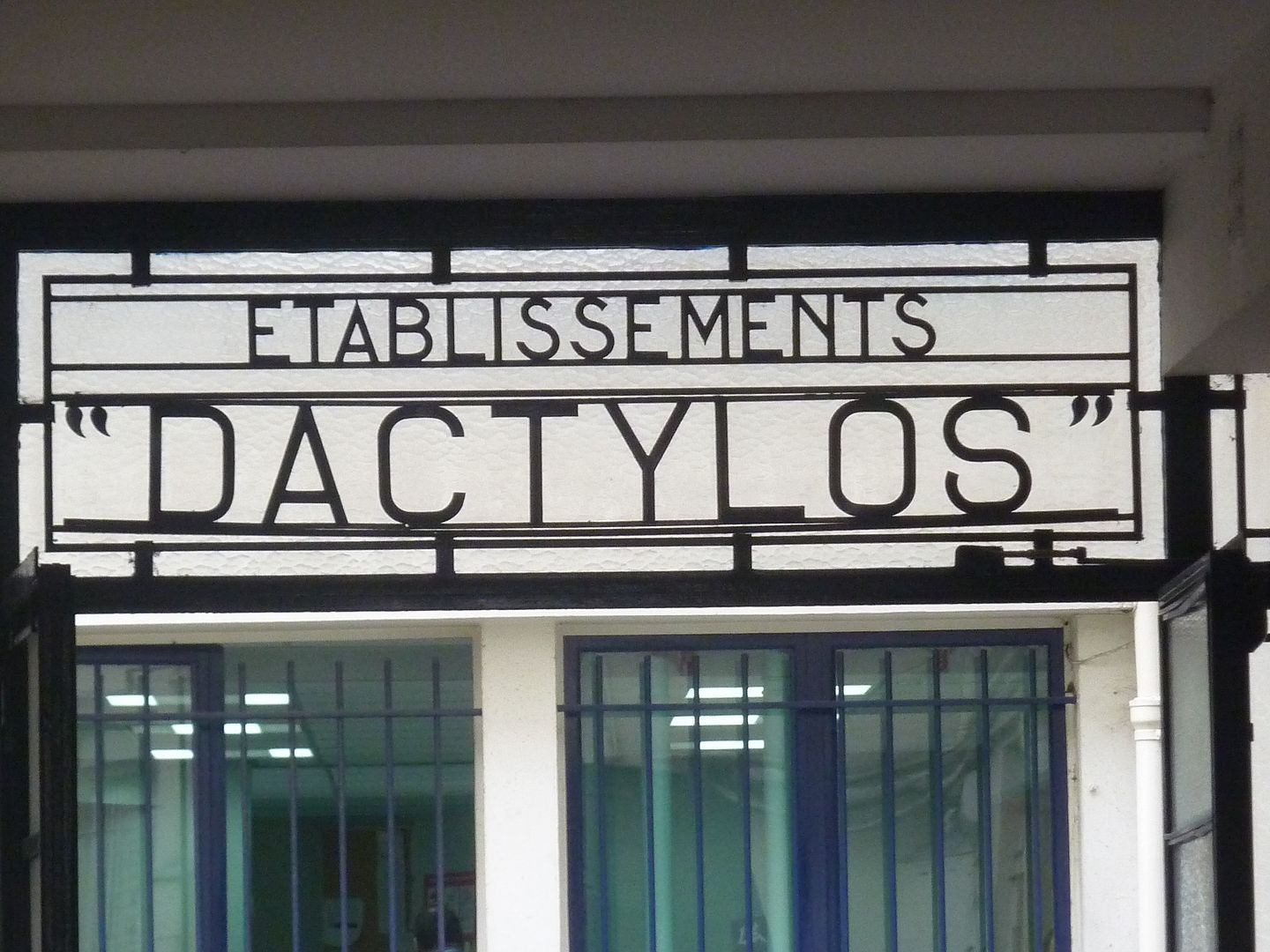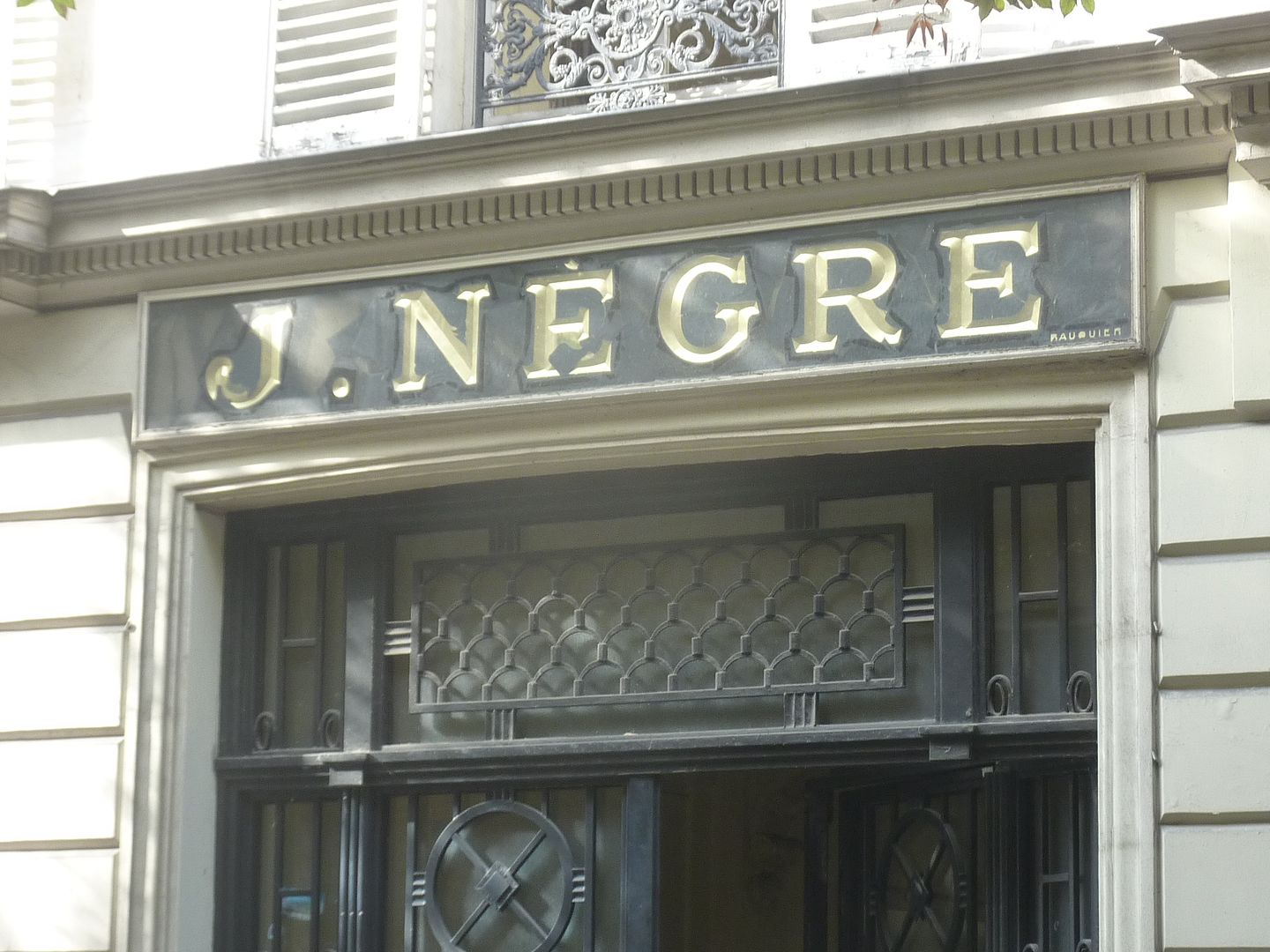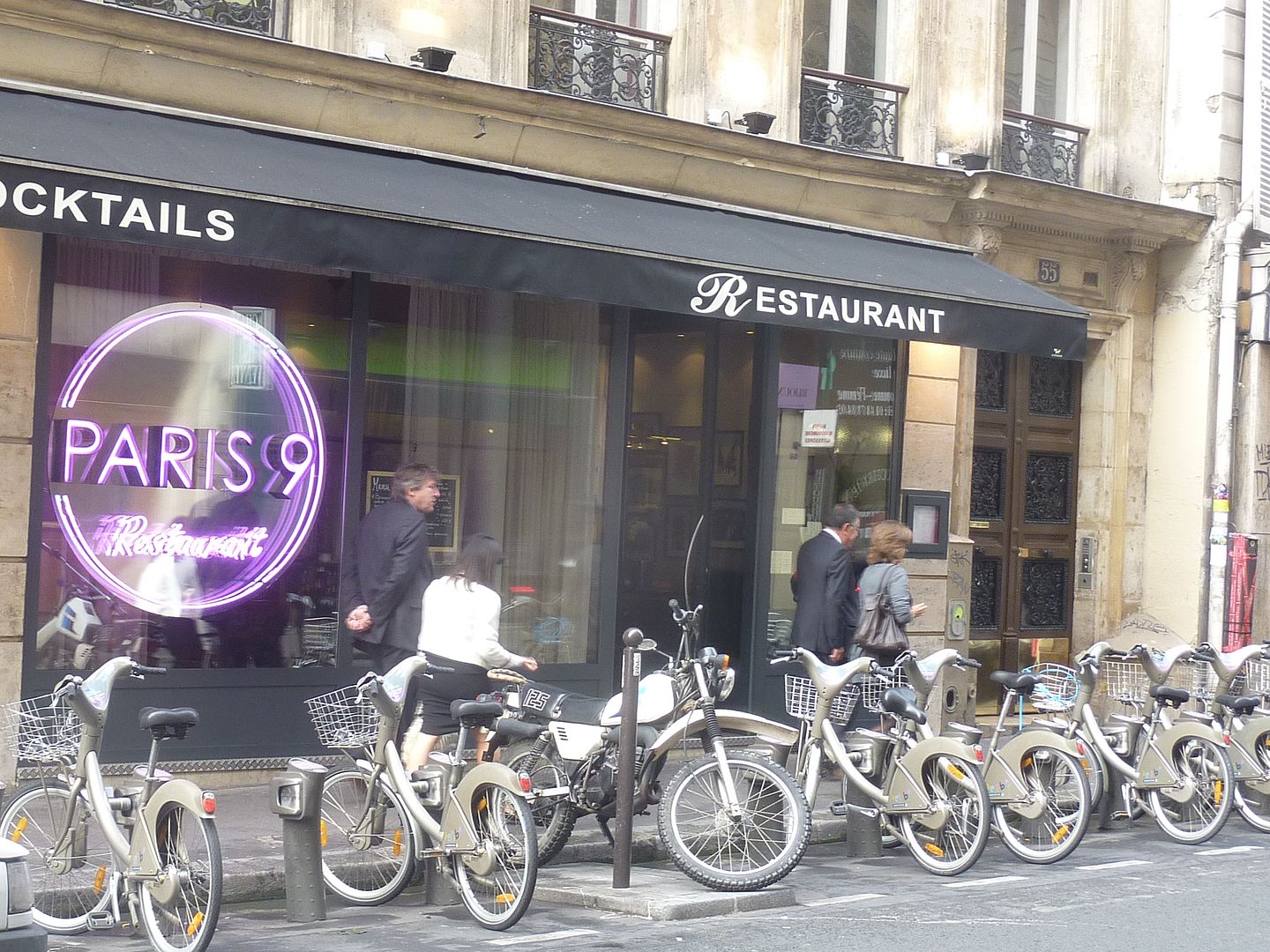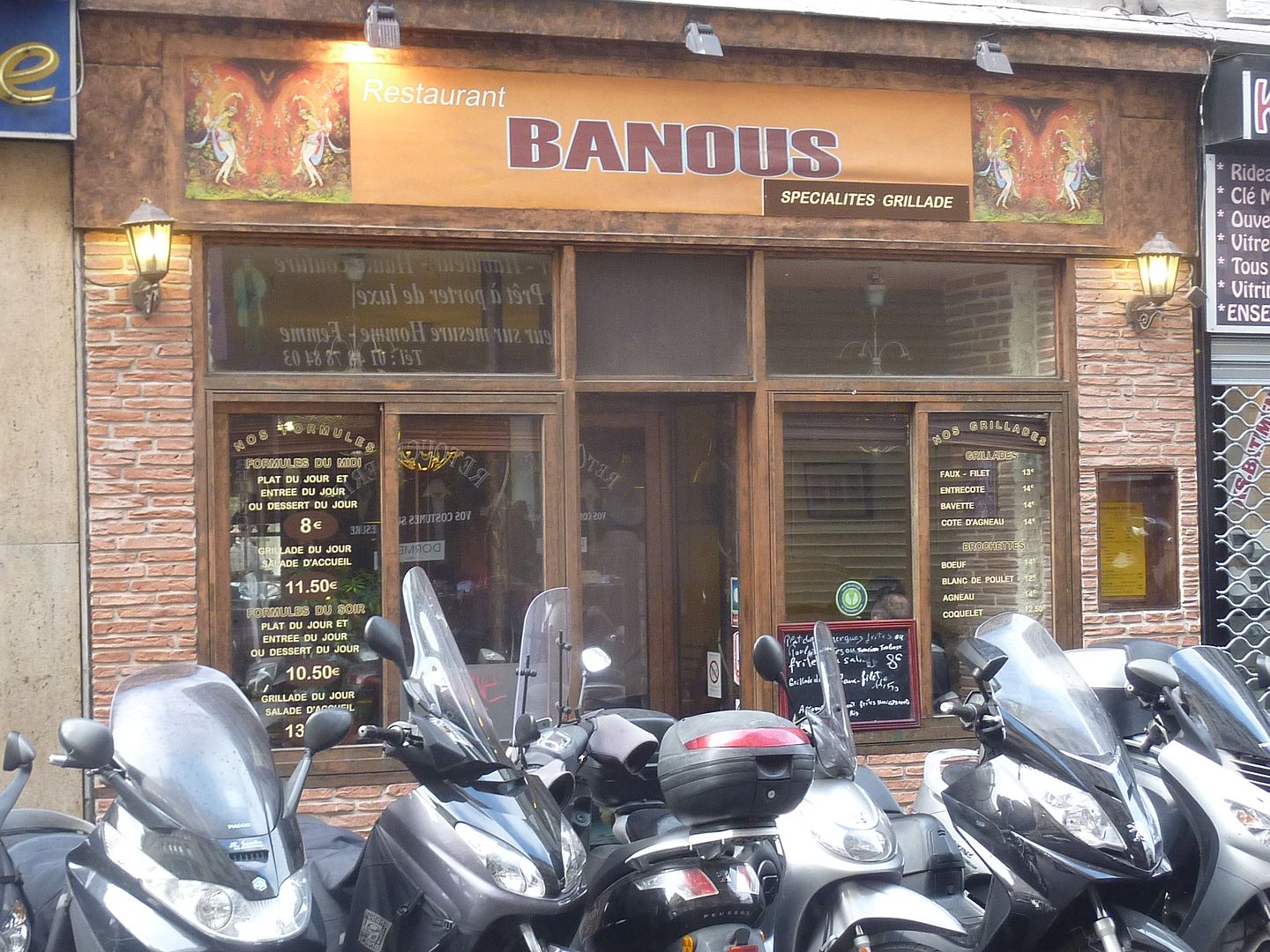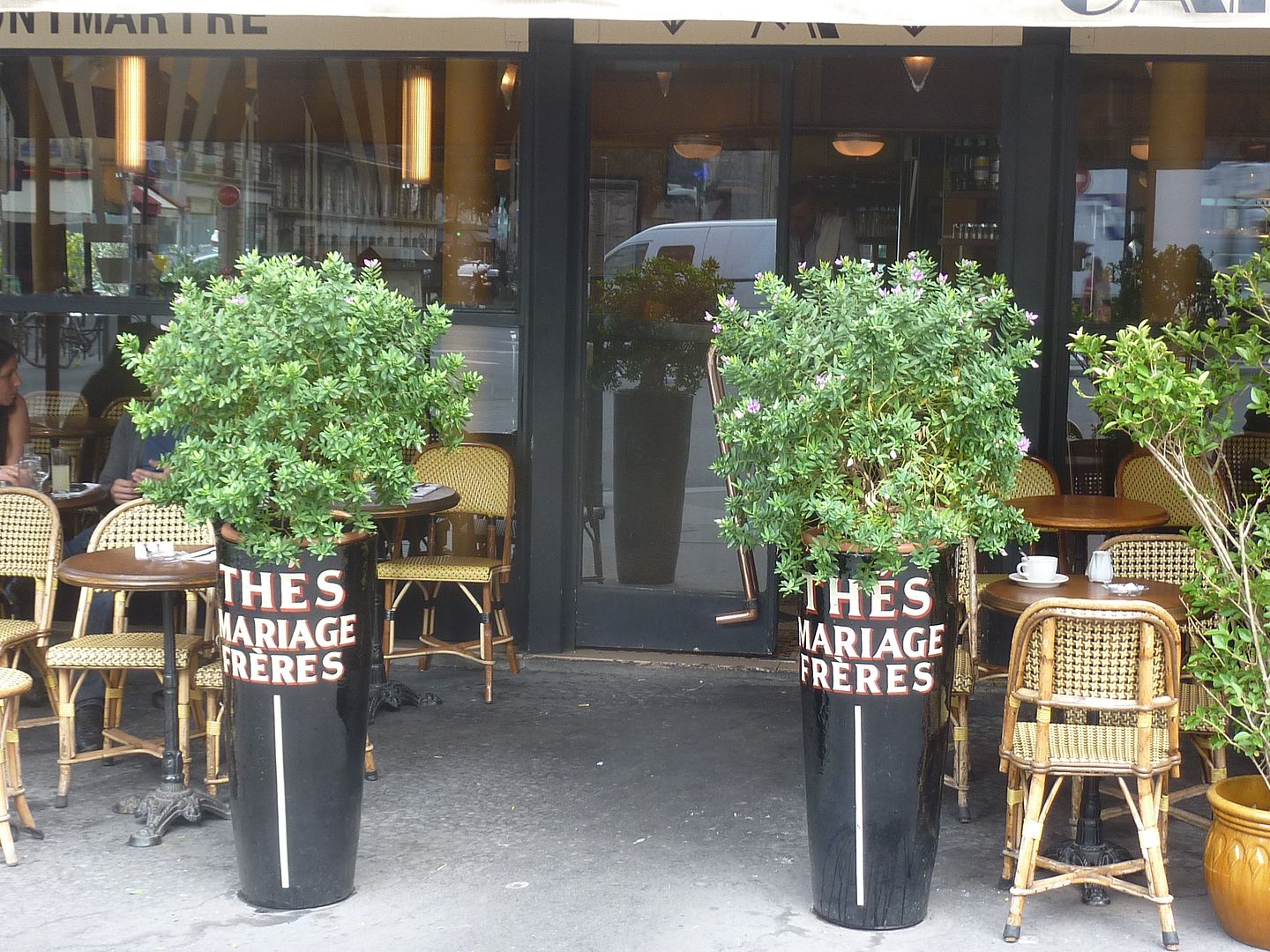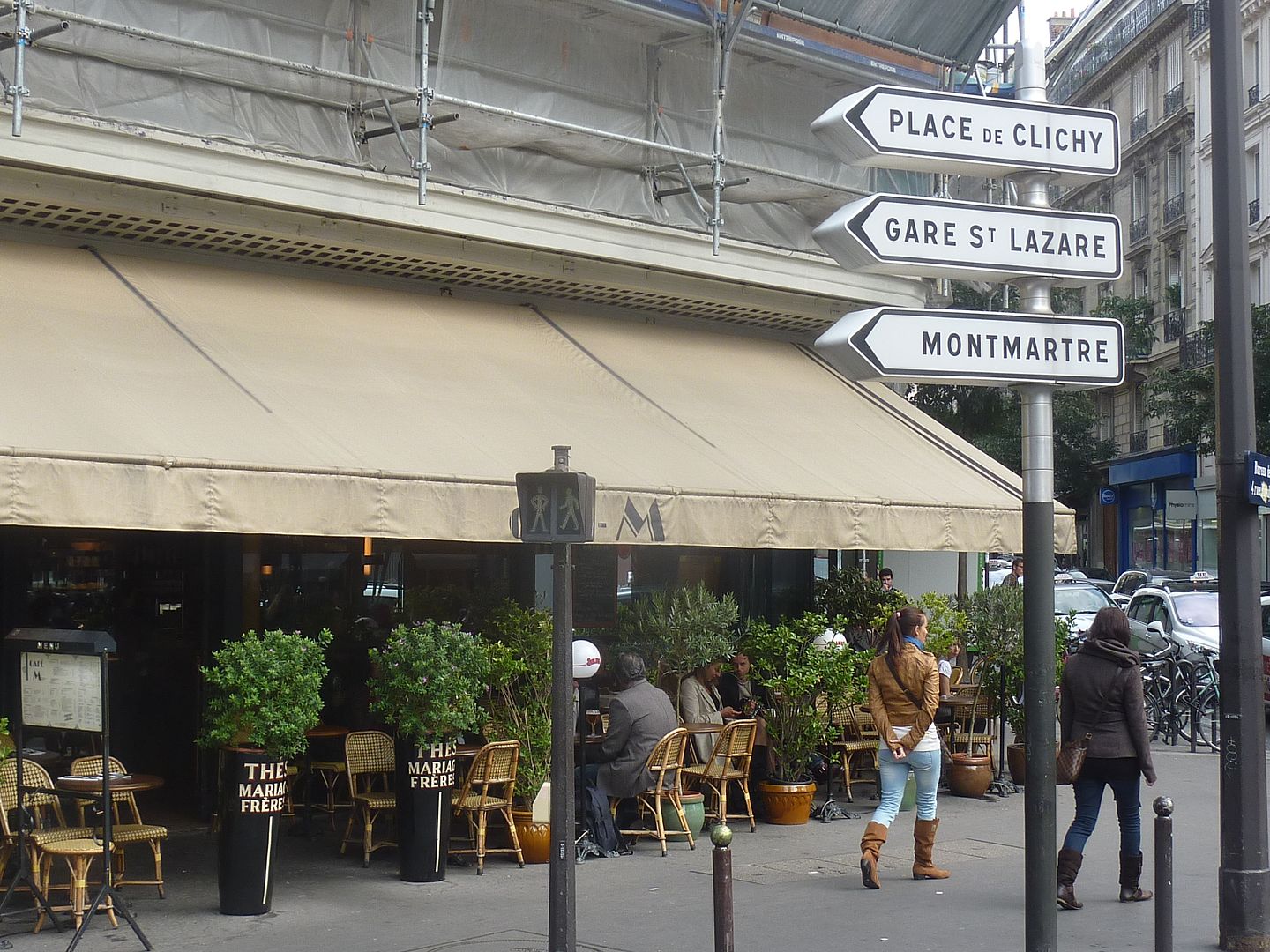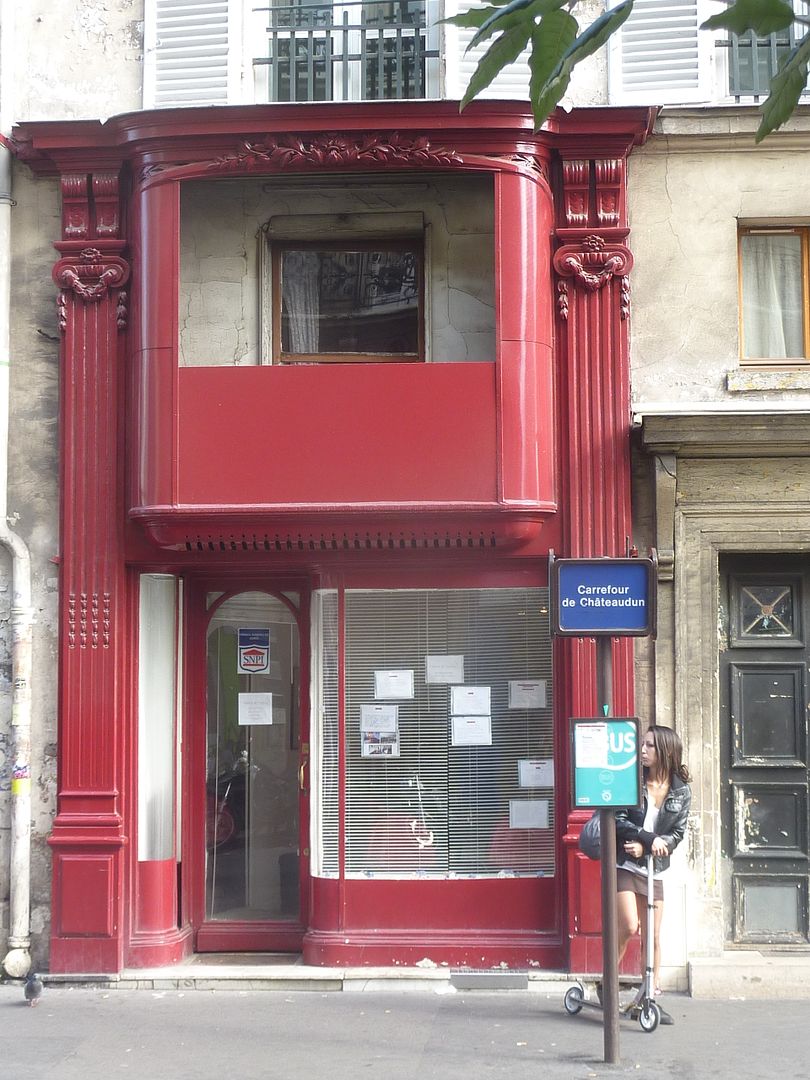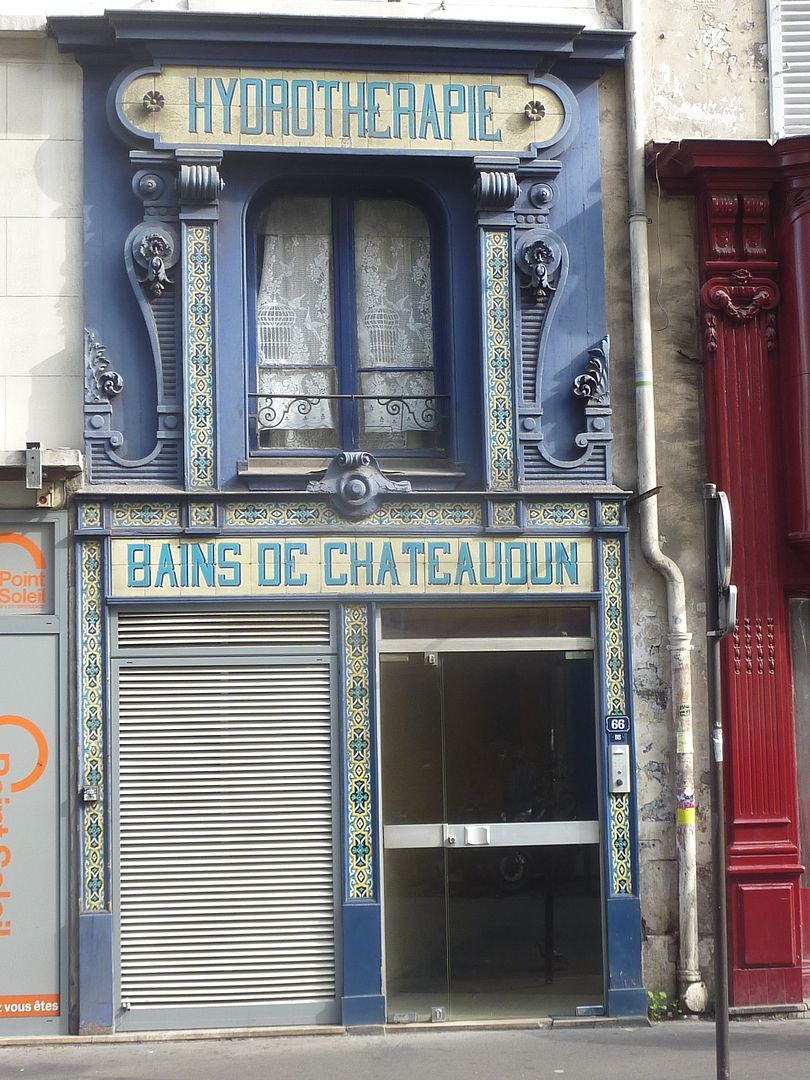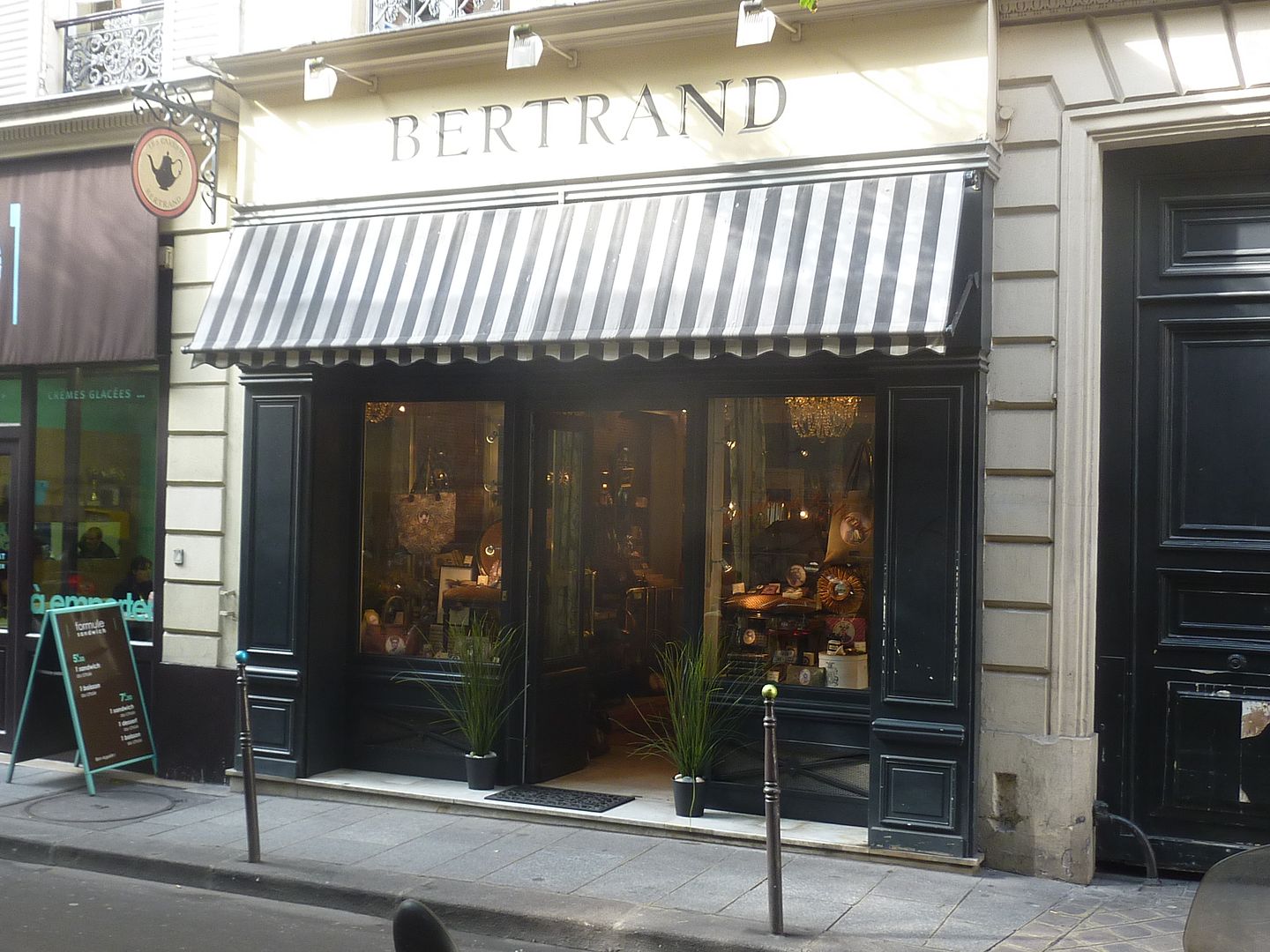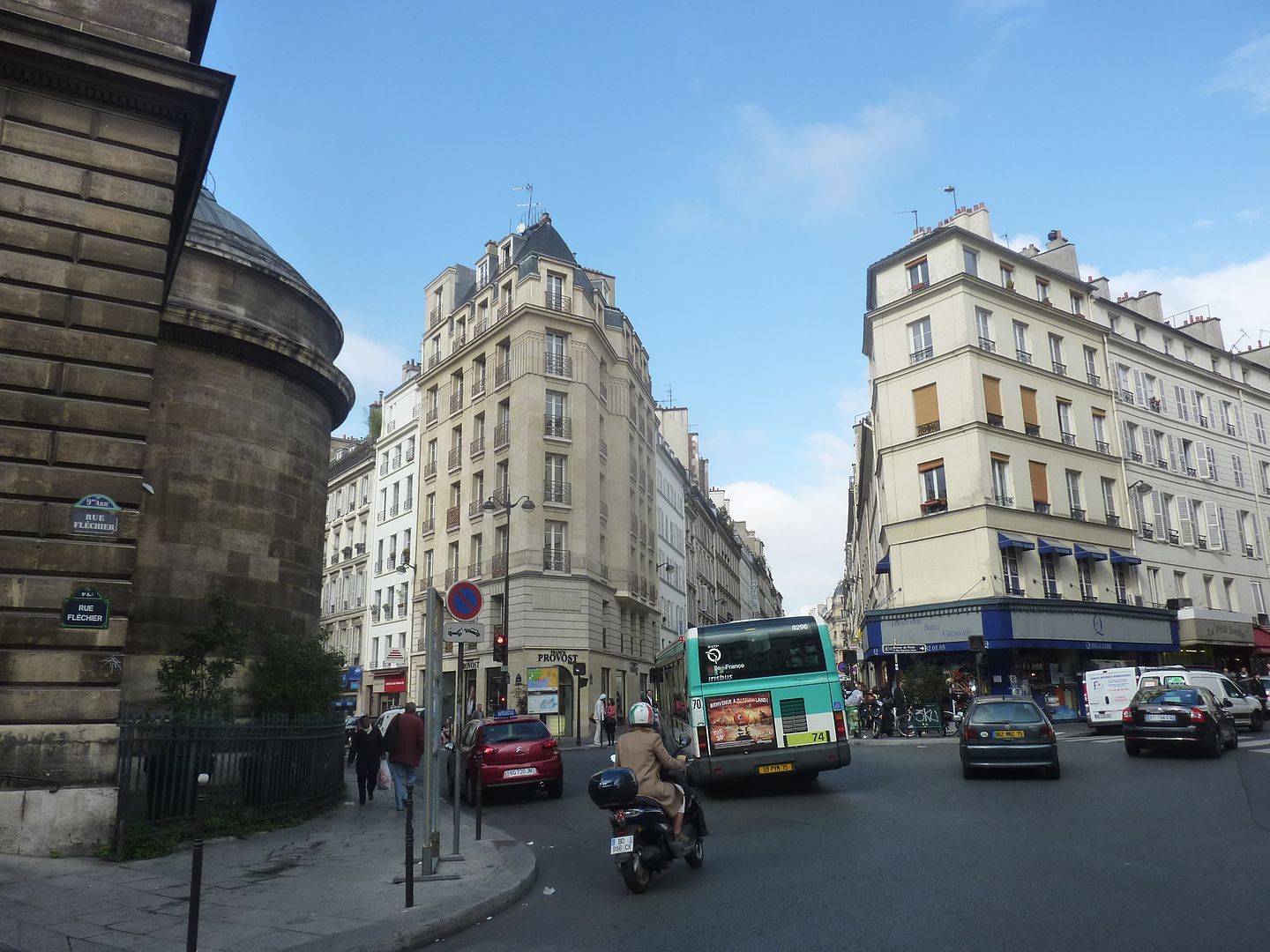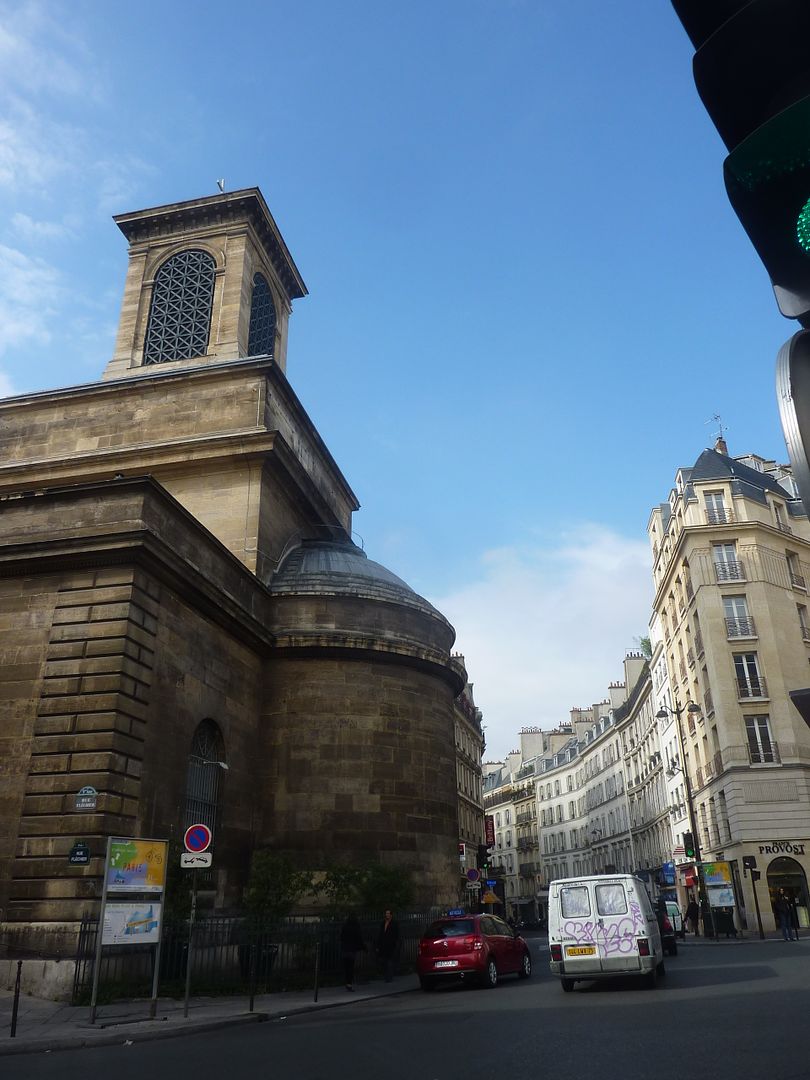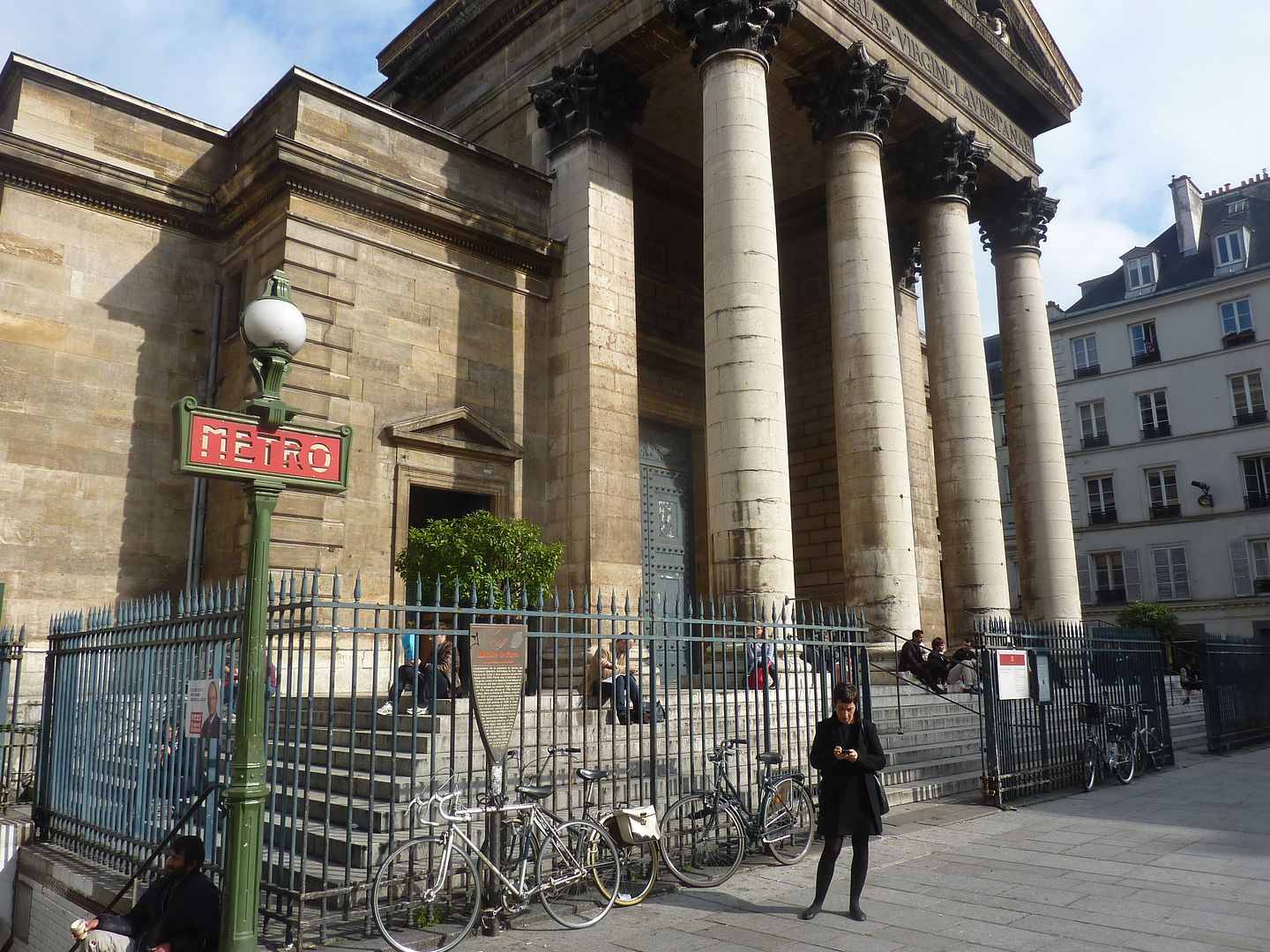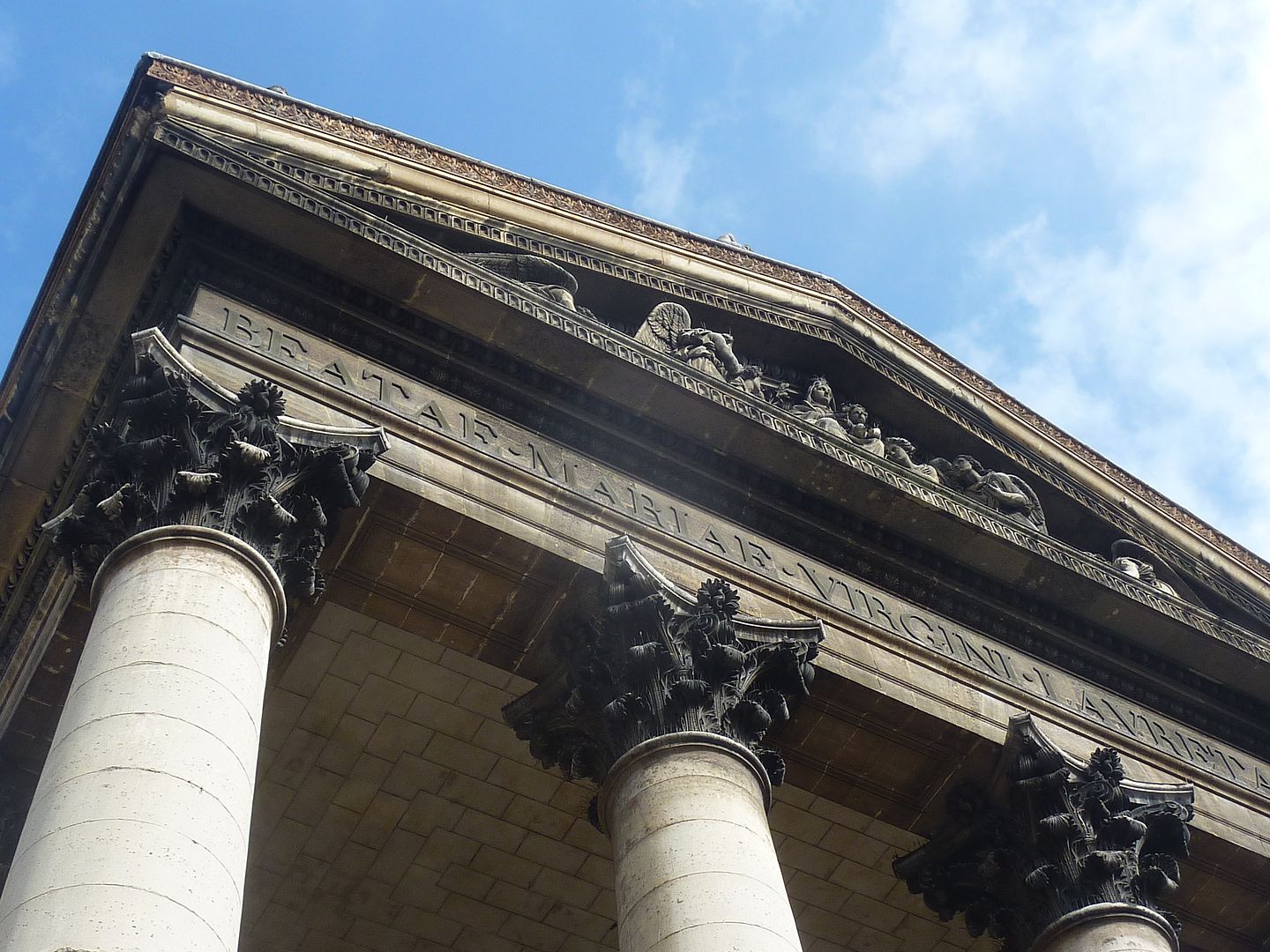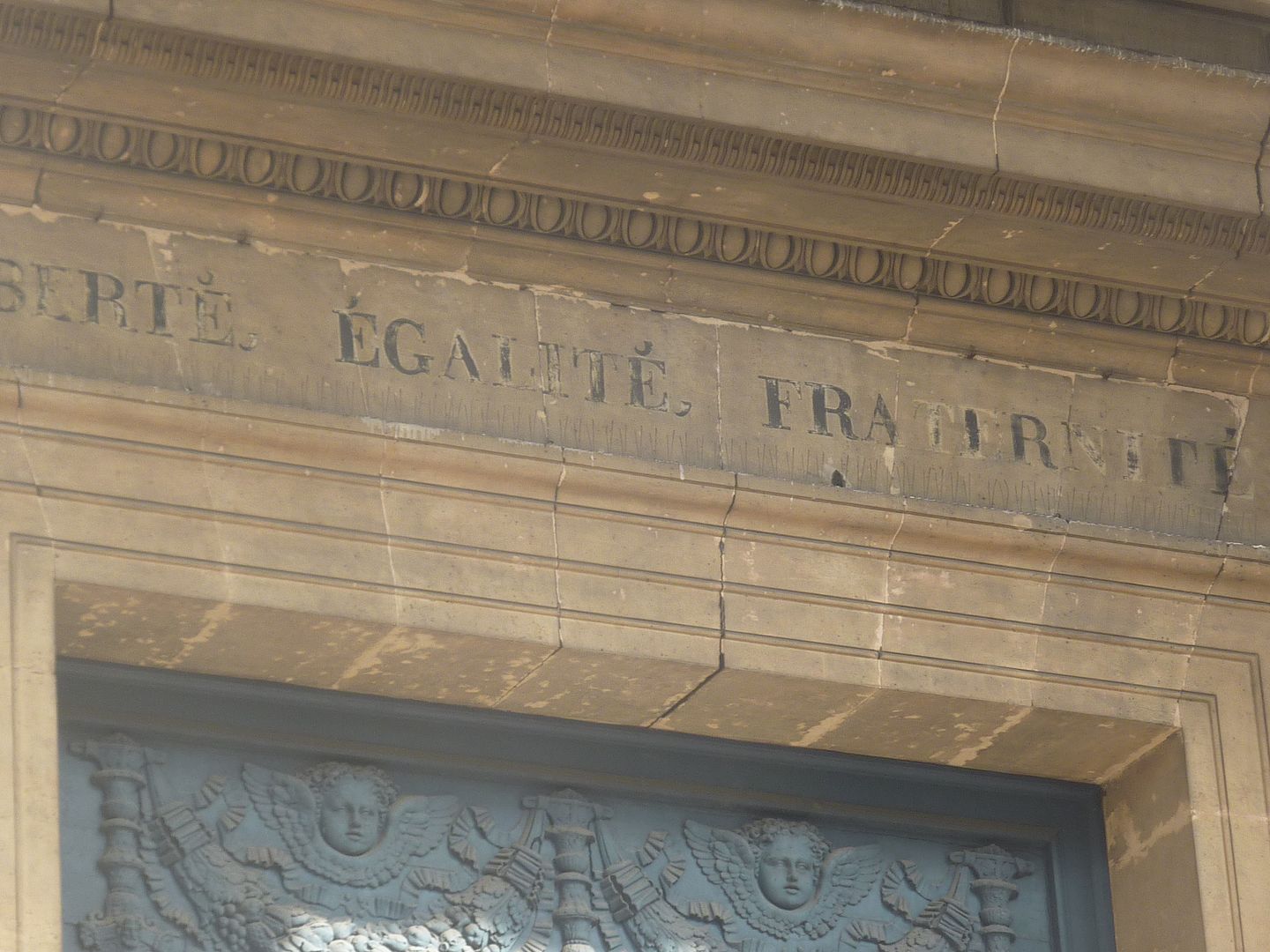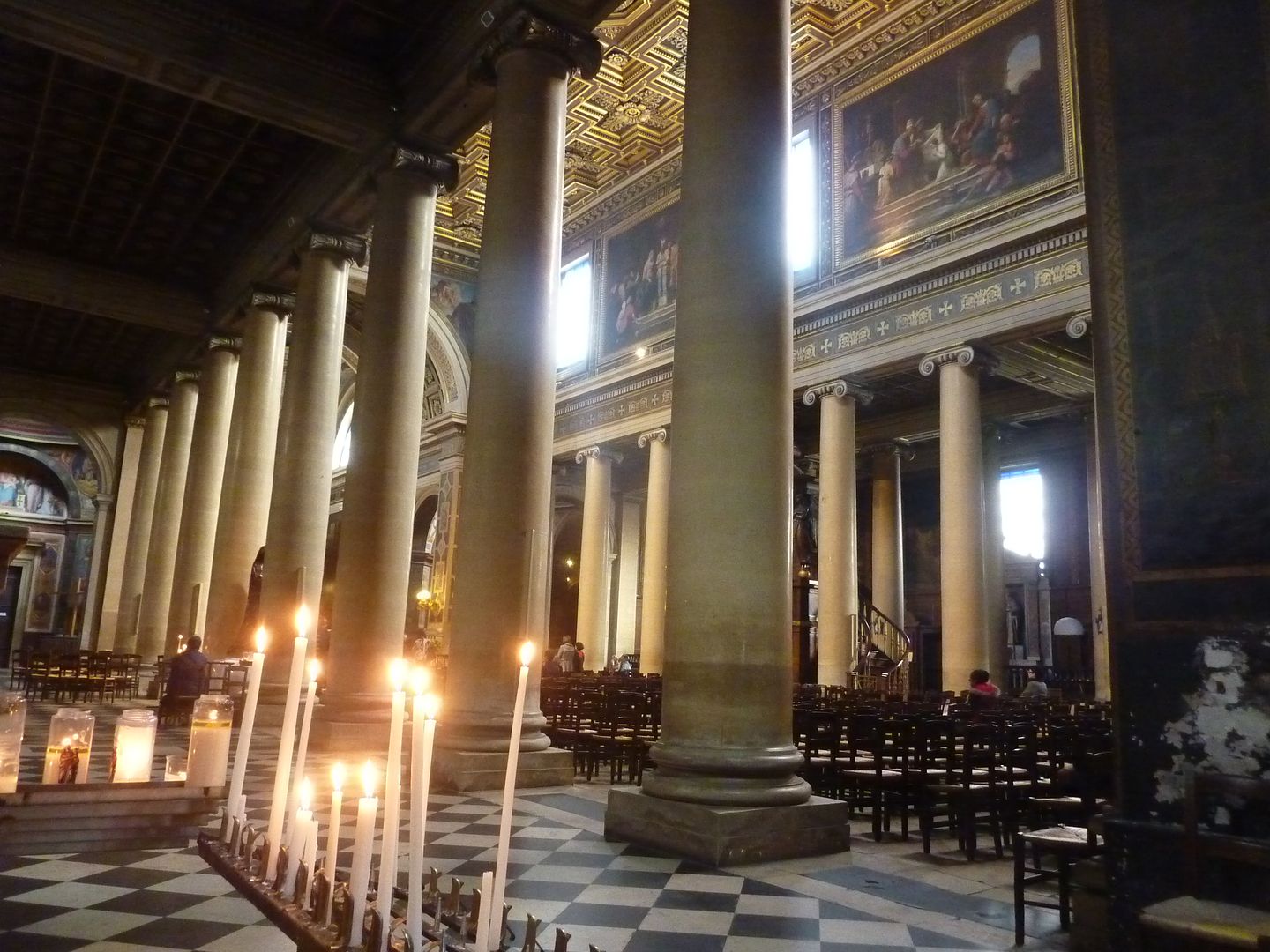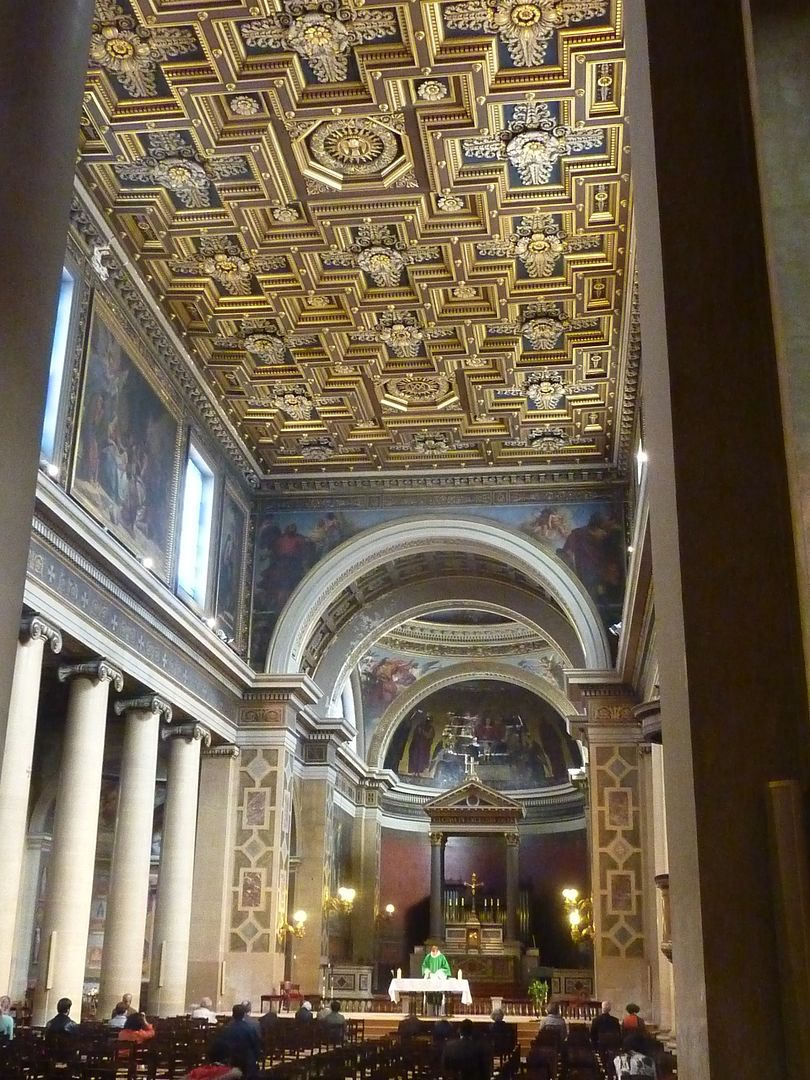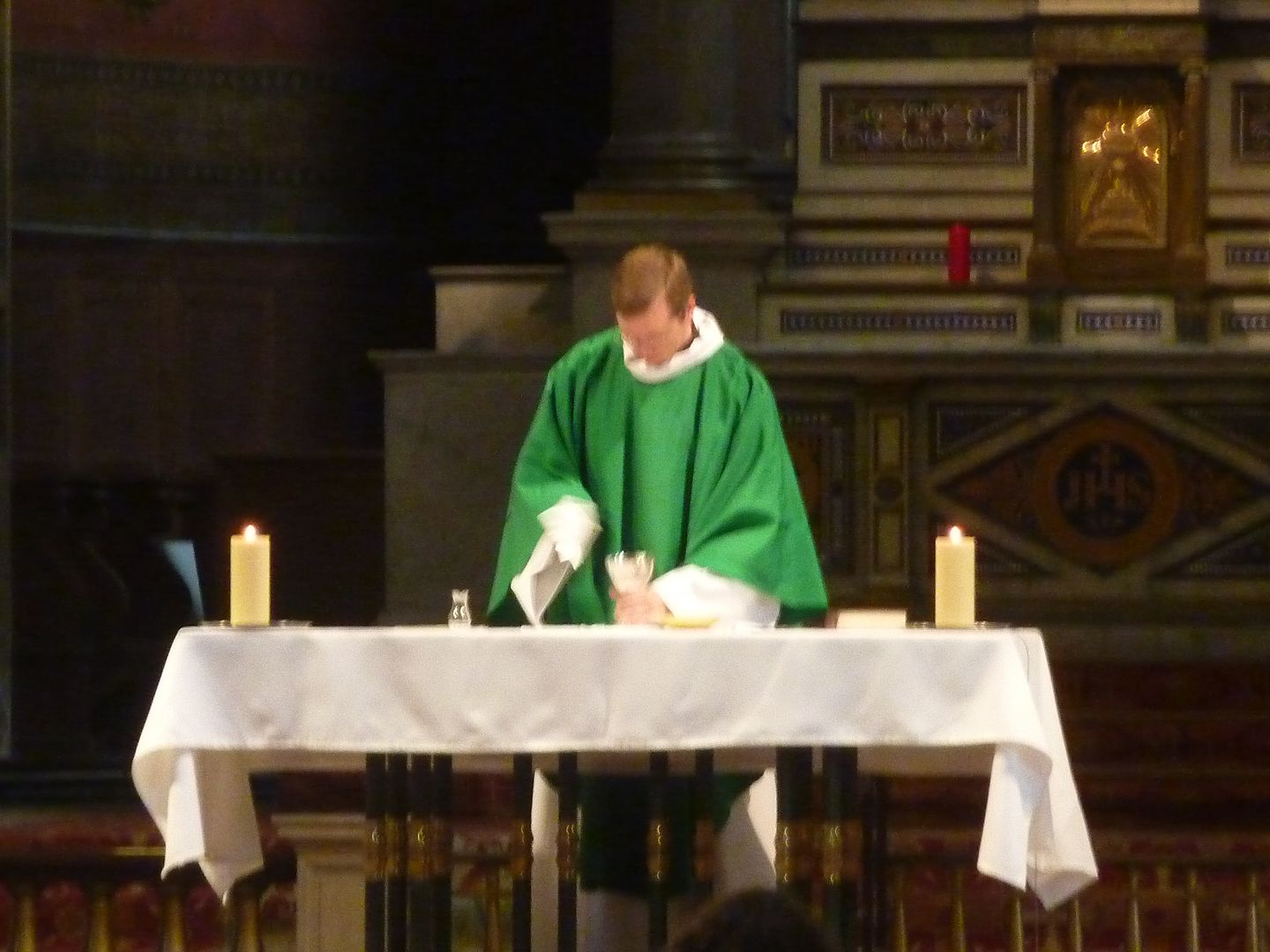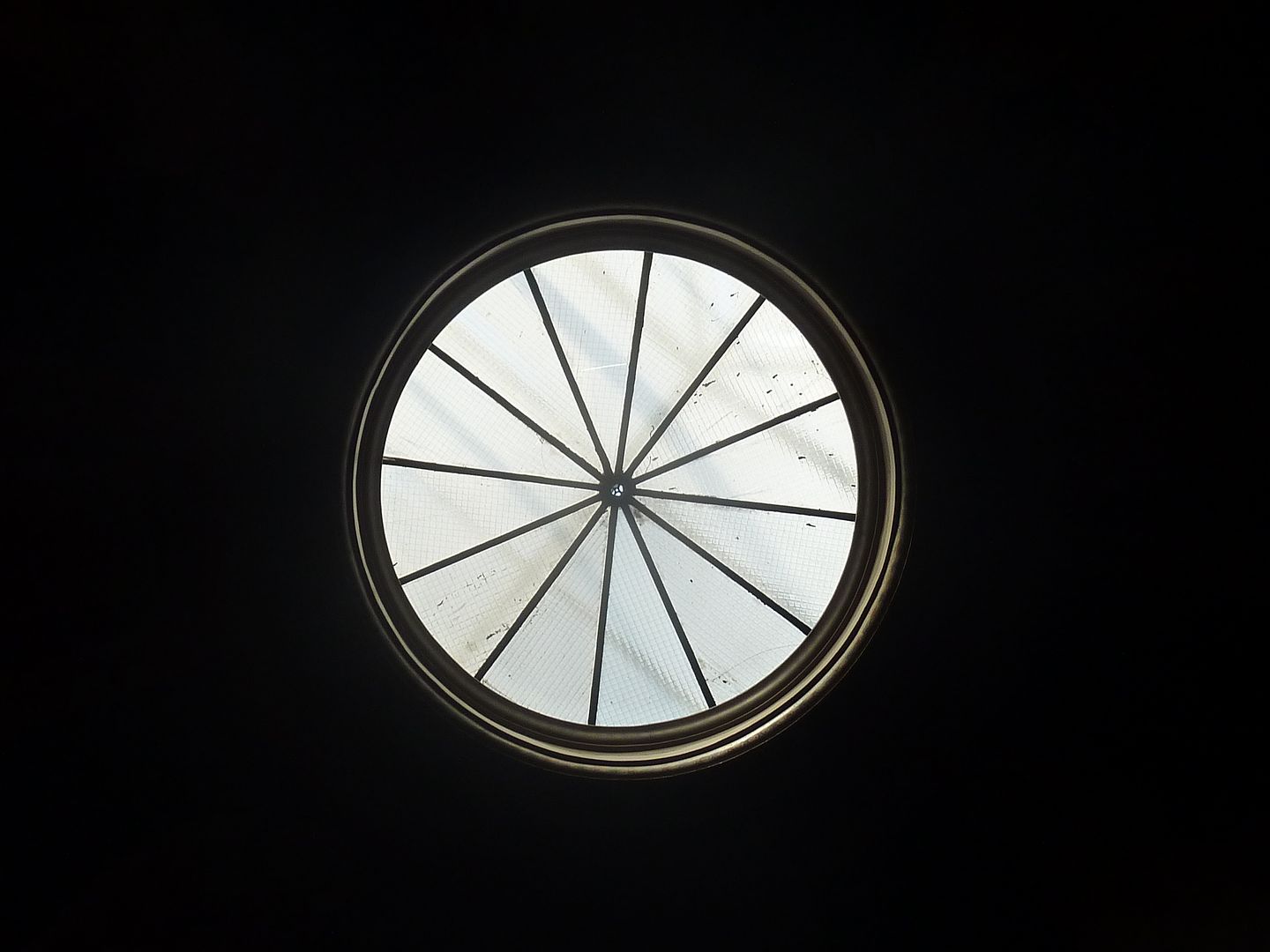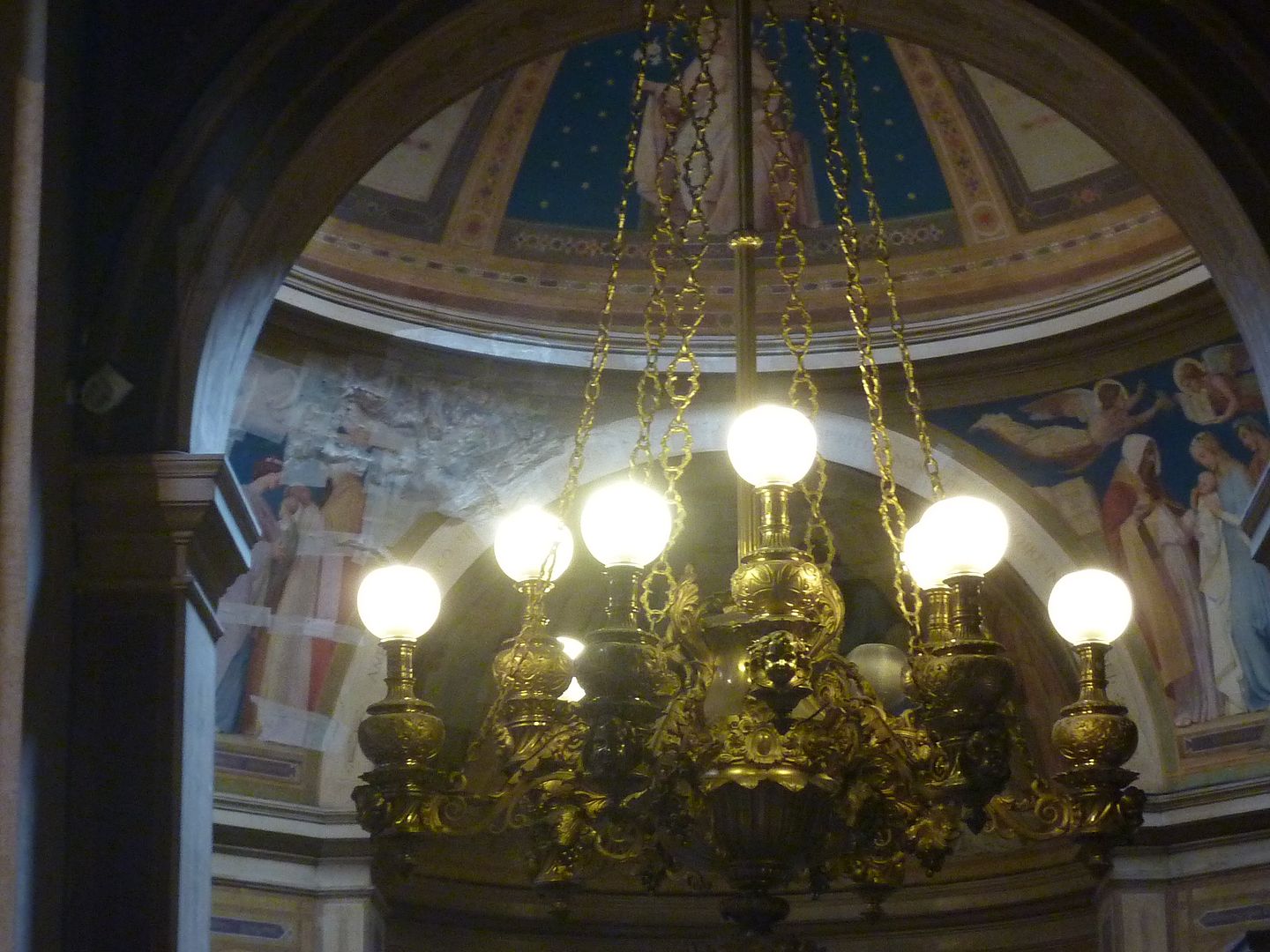|
|
Post by Deleted on Oct 13, 2011 19:55:28 GMT
The Faubourg Montmartre is one of the busiest and most interesting streets of the Grands Boulevards area, as well as being a backbone of the 9th arrondissement. European tourists know it very well, because the 9th arrondissement is the area with the greatest number of hotels in the city, many of them tired and charmless, but still good value for money. North & South American tourist, as well as Asian tourists, rarely stay in this part of town. German, Dutch, Italian and Spanish are the languages you will hear the most. Some people find the area a bit confusing, because of the Montmartre name everywhere and Montmartre itself quite far away. It is for this very reason that the "Rue Montmartre" metro station at this intersection was renamed "Grands Boulevards" in 1998. Simply too many tourists were coming to this station thinking that it was the location of Montmartre. Just about all of the streets of Paris are crooked, often just enough to get you lost, but rue du Faubourg Montmartre is frankly very crooked compared to many other streets. I don't really know why, because it is not a hilly part of Paris. It is also not a very long street. 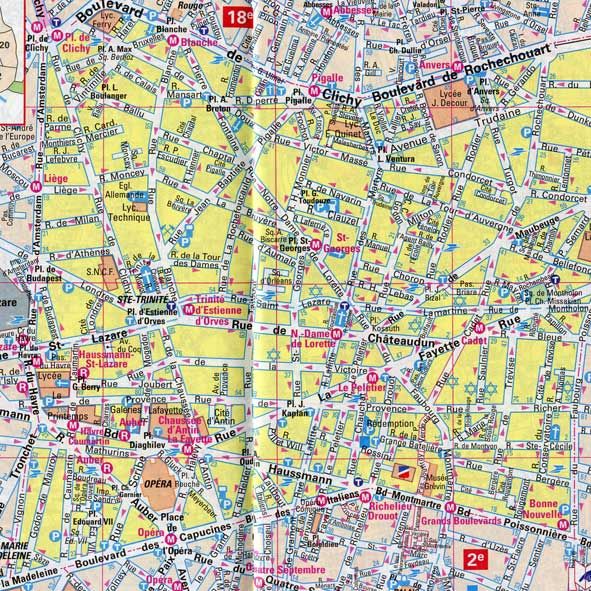  Almost the very first thing you see when you begin to walk up the street is the ultra famous cheap restaurant Chartier. It disappoints lots of people because they think that "ultra famous" is a guarantee of quality, but it is more important to pay attention to the word "cheap," as in "you get what you pay for." I have never had a bad meal at Chartier, but I have never had a spectacular one either. It is so busy in the evening that the most important thing to know is that the waiter will not suffer a tourist fool. You need to know what you want, not ask too many questions, and it is one of the only restaurants in Paris where you must not dawdle. You eat, you pay, you leave! The menu itself is actually a big sheet of paper, mimeographed every day. Therefore, a lot of people take it with them, but I wouldn't do it with a waiter watching.
|
|
|
|
Post by Deleted on Oct 13, 2011 20:54:37 GMT
Just across the street from Chartier is Le Palace, where I misused a significant portion of my young adulthood. It first opened in 1921 and went back and forth over the decades from music hall to cinema to theatre before declining and closing. But it was resurrected in the 1970's and was the principal disco in Europe from 1978 until 1983. In any case, without even knowing anybody, I was welcomed by the bouncers every time I went while others waited behind the velvet rope. Those bastards! Although a lot of us could not afford anything more than the one drink that came with the price of admission, there were only hot water taps in the restrooms. After the owner died, nobody managed to keep the place afloat, and just finally reopened in 2009 as a theatre again. I found some YouTube clips from olden times but nothing good. However, if you ever saw the movie Studio 54, it was pretty much identical. Nothing so exciting in the Faubourg Montmartre these days. The Cité Bergère branches off in the same area. It gives one an idea of the usual hotels all through the 9th arrondissement.   Here you can see both Chartier and Le Palace facing each other. 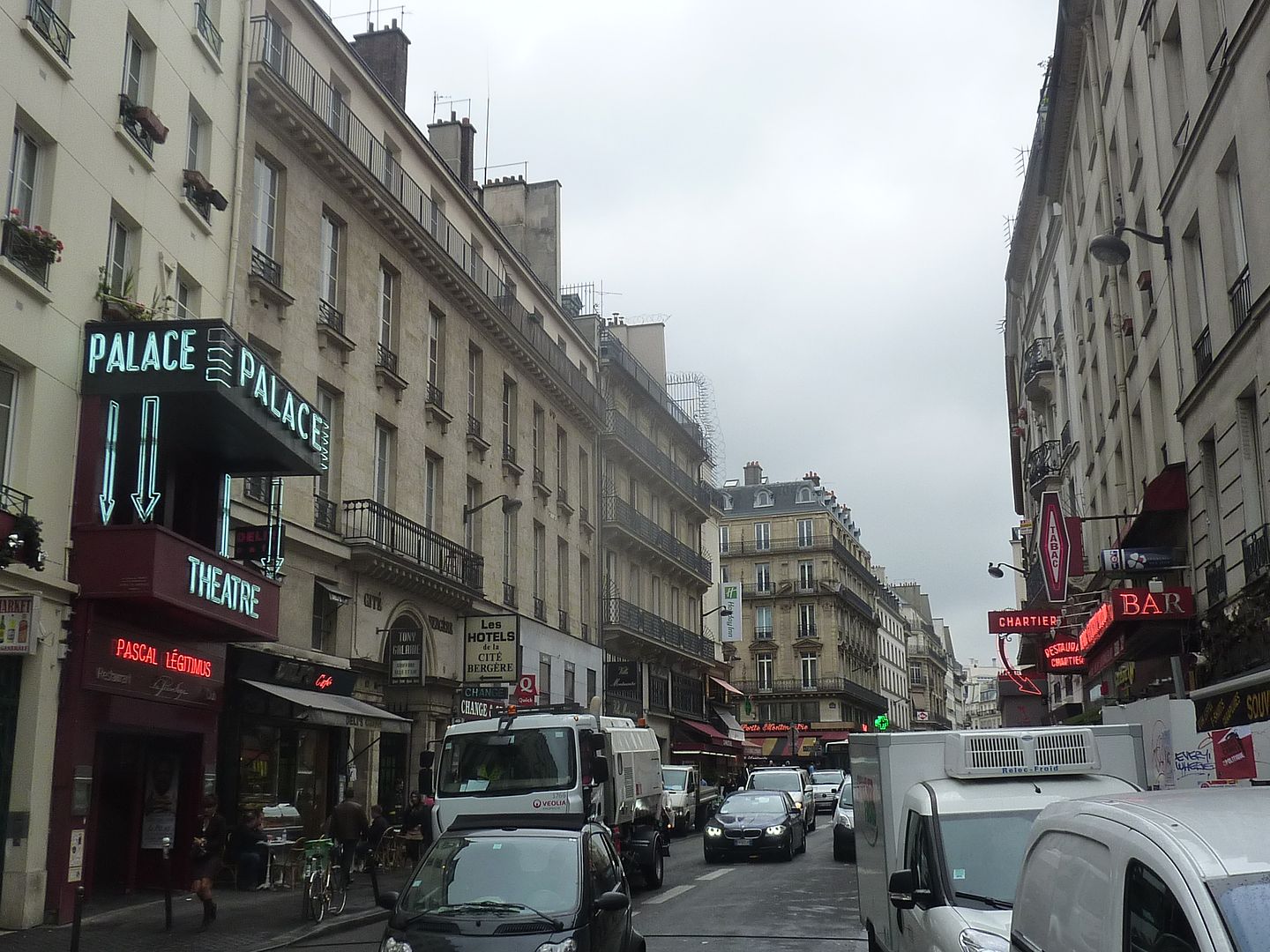 A lot of the street consists of snack bars. 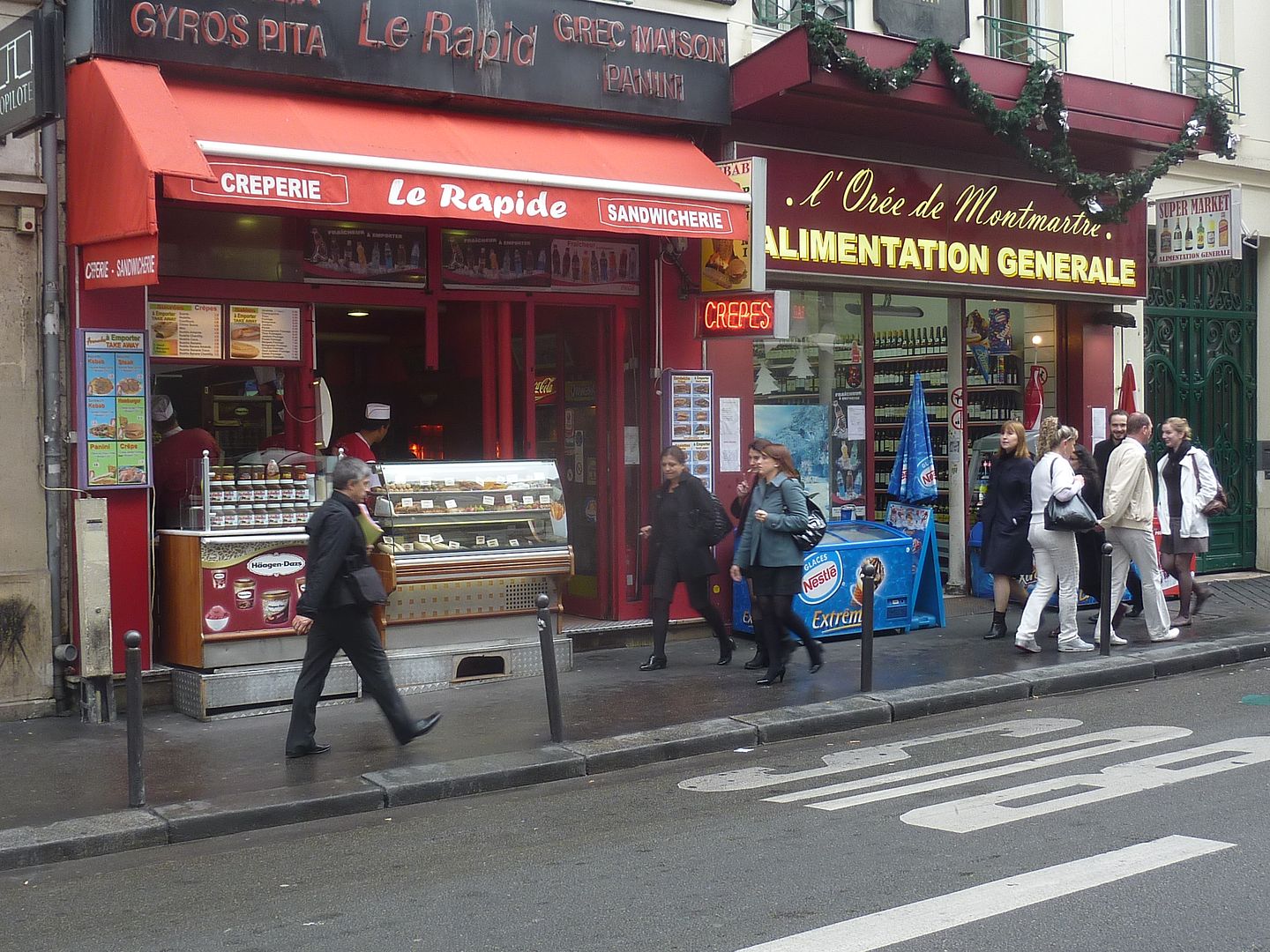 I remember when this place was a nice old neighborhood cinema. 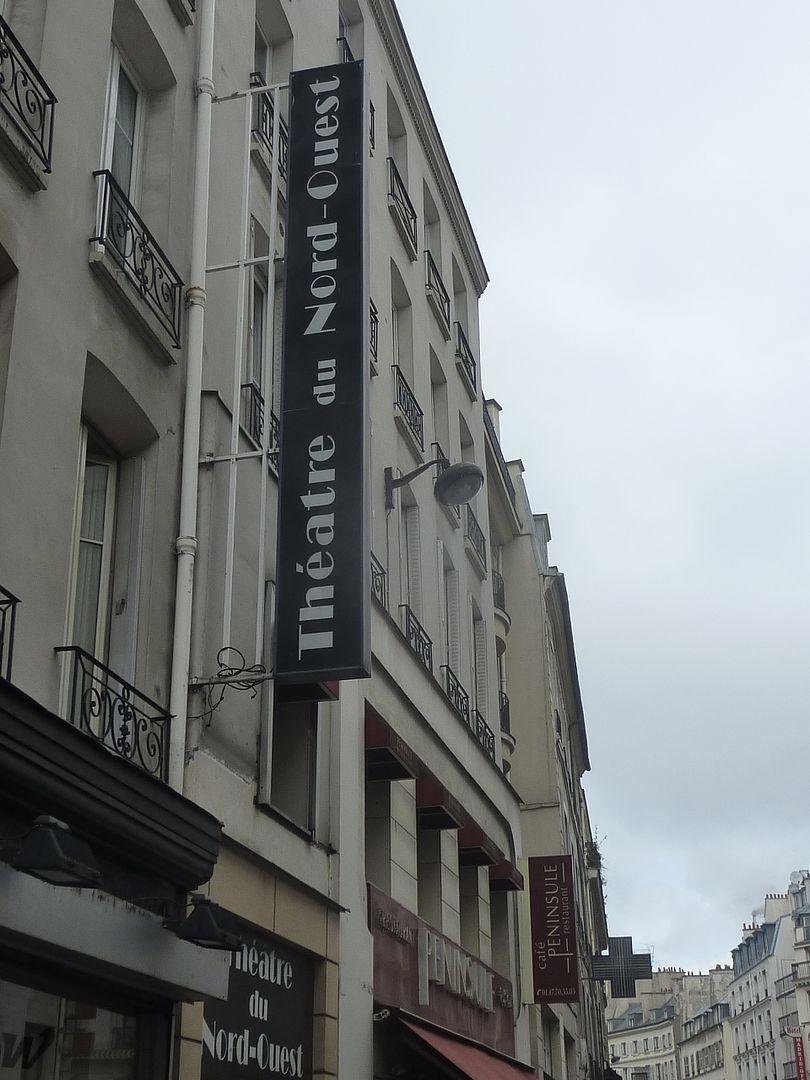 It is in a courtyard as well.  Actually, it was only a cinema for about 30 years. Before then it was a theatre where Edith Piaf used to sing. As for the current name, it is a shortened version of "Northwest Passage," the mythical route through the Arctic Sea. |
|
|
|
Post by lagatta on Oct 13, 2011 22:16:44 GMT
Yes, there are five synagogues shown on the little map on your first post.
|
|
|
|
Post by Deleted on Oct 14, 2011 4:59:06 GMT
A little more than halfway up are some major intersections with rue La Fayette and rue de Châteaudun. You can get to all sorts of places from here, but what about Montmartre? |
|
|
|
Post by onlymark on Oct 14, 2011 6:30:03 GMT
The 'North West' Cinema - I can't see why it would be named after the sea passage unless (but highly likely) I'm missing something. I can't see the link.
But I can see a tenuous link with the name to the film "North by North West".
Why is the road crooked?
I have a theory - I have theories about many things and if I don't then I'll just make one up - anyway, the street is following the line of least resistance, based on an old throughway, that joins up the crossing of the Seine at Pont de Clichy, where there have been a number of bridges and bridges are usually built in a certain place because of the historical crossing of the river at that point - and onto the island and across the river at either the Pont au Change or the Pont Notre Dame.
This forms a short cut through the great big bend in the river.
|
|
|
|
Post by fumobici on Oct 14, 2011 15:51:01 GMT
I'm eating this up. So much more real-authentic than the usual tourist dreck. Makes me really want to be there walking these streets.
|
|
|
|
Post by Deleted on Oct 14, 2011 17:08:06 GMT
In any case, even though it is already a favorite of European tourists, I recommend it to everybody with an interest in the real city because it has remained very authentic and "middle class Parisian." It's not chic, but it has some nice places and some extremely ordinary places. The Folies Bergère, which will reopen as a music hall in a year, is just up one of the side streets. And even if the name is misleading, yes, you can get to Montmartre from here. |
|
|
|
Post by lagatta on Oct 14, 2011 23:39:00 GMT
I'd like to find more about the Ibis in rue Cadet.
Indeed, you don't make me want to eat at le bouillon Chartier, especially since I hate to be rushed. I'm sure that once out of central places, there are modest but less hectic places with about the same prices.
I'm not really interested in farces et attrapes as they are the same everywhere.
I don't find the name misleading at all, thinking for example of rue de Montreuil, then rue de Paris in all the proches banlieues once one is outside the ring road. There are "Montreal Roads" in towns in eastern Ontario.
Very nice thread.
|
|
|
|
Post by bixaorellana on Oct 15, 2011 6:59:15 GMT
The area is so naturally charming. This really felt like "being there".
Re: the crooked streets -- I have a theory, too, which may be all wet, but ........ there are parts of uptown New Orleans where streets take decided jogs, and parts of other cities where streets form triangles, rhomboids, etc. rather than tidy squares. Often that's because the areas were once rural and divided between many different owners. When they were finally re-surveyed and stitched together to become paved parts of the cities, the effect was a crazy quilt.
Those covered passages intrigue me. Are they only practical, to get from one parallel street to another more easily, or did they have another purpose. There's a passage from Chartres to Dauphine in N.O. that used to be a rope walk.
About the church, was that front part added during the revolution to honor Grecian ideals and that sort of thing? It doesn't look very churchy somehow, nor does it seem to go with the very old looking back portion. The only paintings I can see well, the ones to the right of the chandelier, seem sort of pre-Raphaelite, so maybe painted as replacements after the revolution.
Are all the motor bikes in front of the candy store for making deliveries?
To me, the whole area has a homey feel.
It really is a lovely thread.
|
|
|
|
Post by bjd on Oct 15, 2011 18:20:50 GMT
Bixa, at a guess I would say the motorbikes are just parked there. Lots of Parisians use motorcycles or scooters to get around.
And I just had a look for information about the architecture of the church. It was built in the 1820s, to copy Roman architecture. It was a fashion. Another un-churchy looking one is La Madeleine which is even less attractive because it's bigger. The paintings in ND de Lorette reflect painting fashion of the time.
|
|
|
|
Post by mich64 on Oct 15, 2011 19:02:05 GMT
Yes bjd and Bixa, I noticed motorbikes and scooters everywhere in Paris this past trip. More so than usual, perhaps because I was in the 12th where it seemed more residential.
Kerouac, you instill the need to return to Paris in me every time I view one of your pictorials. Indeed, you the capture daily life in your photos.
We stayed in the 10th on our first visit to Paris, the Little Regina, very close to the 9th. My husband's cousin has such a difficult time finding the Hotel (this is before personal GPS units were normal), he commented on how the streets were so unusually curved and how the streets stopped abruptly.
I look forward to more...
Cheers,
Mich
|
|
|
|
Post by bixaorellana on Oct 15, 2011 21:36:53 GMT
Thanks, Bjd. That kind of detail really fleshes out the history. And thanks to you & to Mich for the motorbike info. It's so logical, but even after having seen so many photos of Paris on this forum, it never clicked for me that it was a common form of transportation.
|
|
|
|
Post by Deleted on Oct 15, 2011 22:07:10 GMT
The area is so naturally charming. This really felt like "being there". Those covered passages intrigue me. Are they only practical, to get from one parallel street to another more easily, or did they have another purpose. There's a passage from Chartres to Dauphine in N.O. that used to be a rope walk. Actually those passages are simply the precursors of shopping malls. Many of them were built in the early years of the 19th century to make rows of shops more appealing in inclement weather. |
|
LouisXIV
member
Offline
L'estat c'est moi.
|
Post by LouisXIV on Oct 16, 2011 0:43:55 GMT
Kerouac2: "The menu itself is actually a big sheet of paper, mimeographed every day. Therefore, a lot of people take it with them, but I wouldn't do it with a waiter watching." Really a mimeograph machine and not a copy machine? I have not seen a mimeograph machine since the late 1950's.
|
|
|
|
Post by Deleted on Oct 16, 2011 5:13:50 GMT
Yes, the last time I went, they were still mimeographing the menus! They are on big sheets of non standard paper, of which neither the size nor the quality could be handled by a photocopy machine. But I haven't been for at least 3 years, so perhaps they have finally moved on... (except the whole point of this place is not to "move on"!)
|
|
|
|
Post by Deleted on Oct 16, 2011 15:03:52 GMT
I never get tired of seeing pictures of Paris. So colorful. Seems likes it's getting more and more cosmopolitan day by day.
|
|
|
|
Post by nycgirl on Oct 16, 2011 15:52:34 GMT
"Location" means "rental," huh? I would have never called that.
Looks like a fun street. Thanks for sharing.
|
|
|
|
Post by sojoh on Oct 20, 2011 21:48:19 GMT
Kerouac, After having just visited a huge costume store in Boston, I was wondering if there is anything similar in Paris. This thread answered my question. Thanks! I'll have to check out the shops on rue du Fauburg Montmartre and see what kind of costumes they have. I won't, however, eat at Chartier.
|
|

